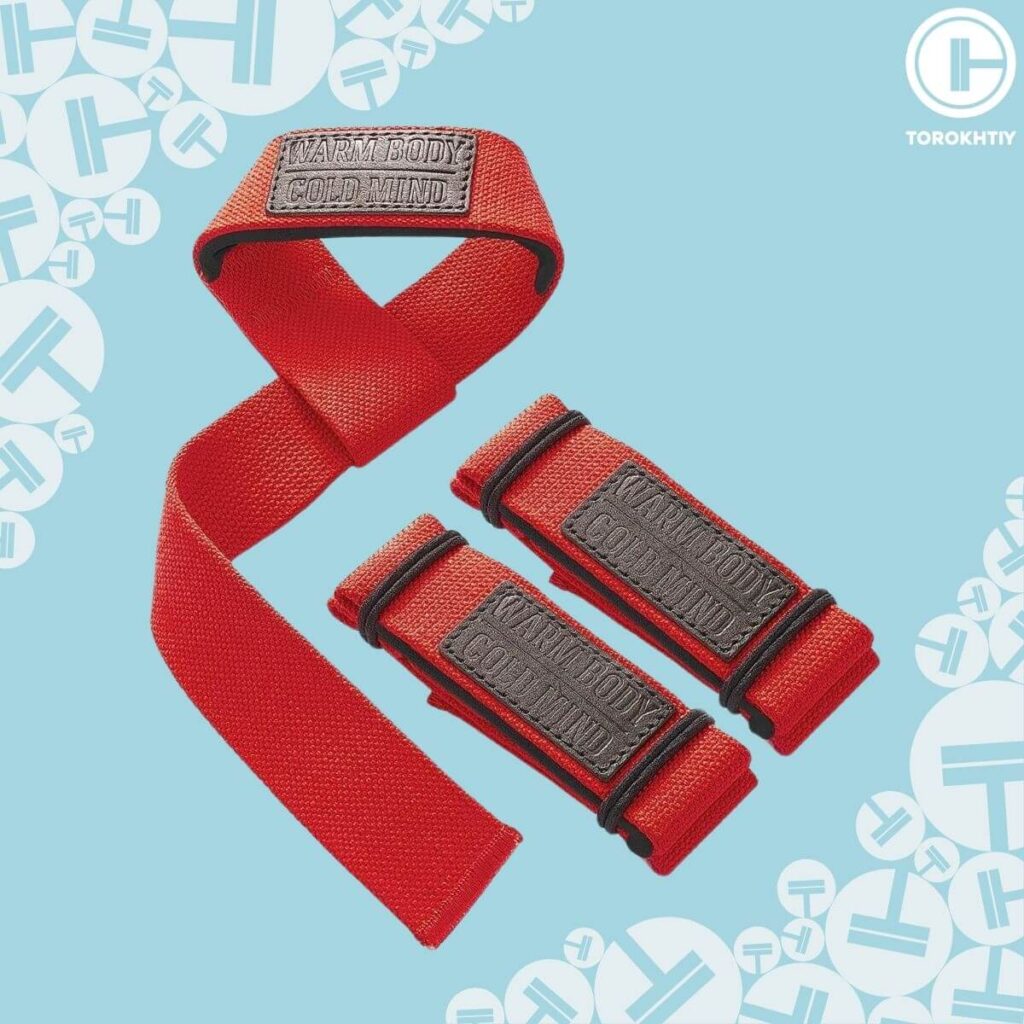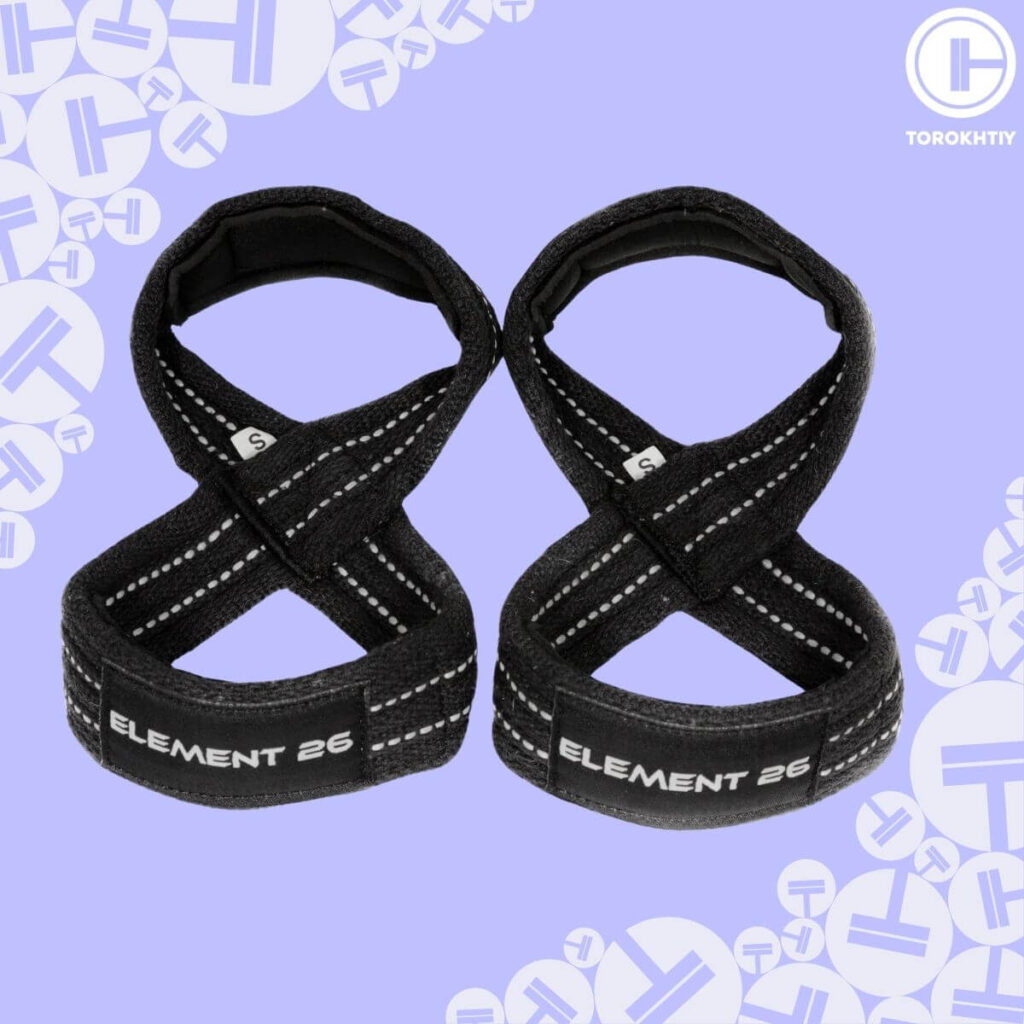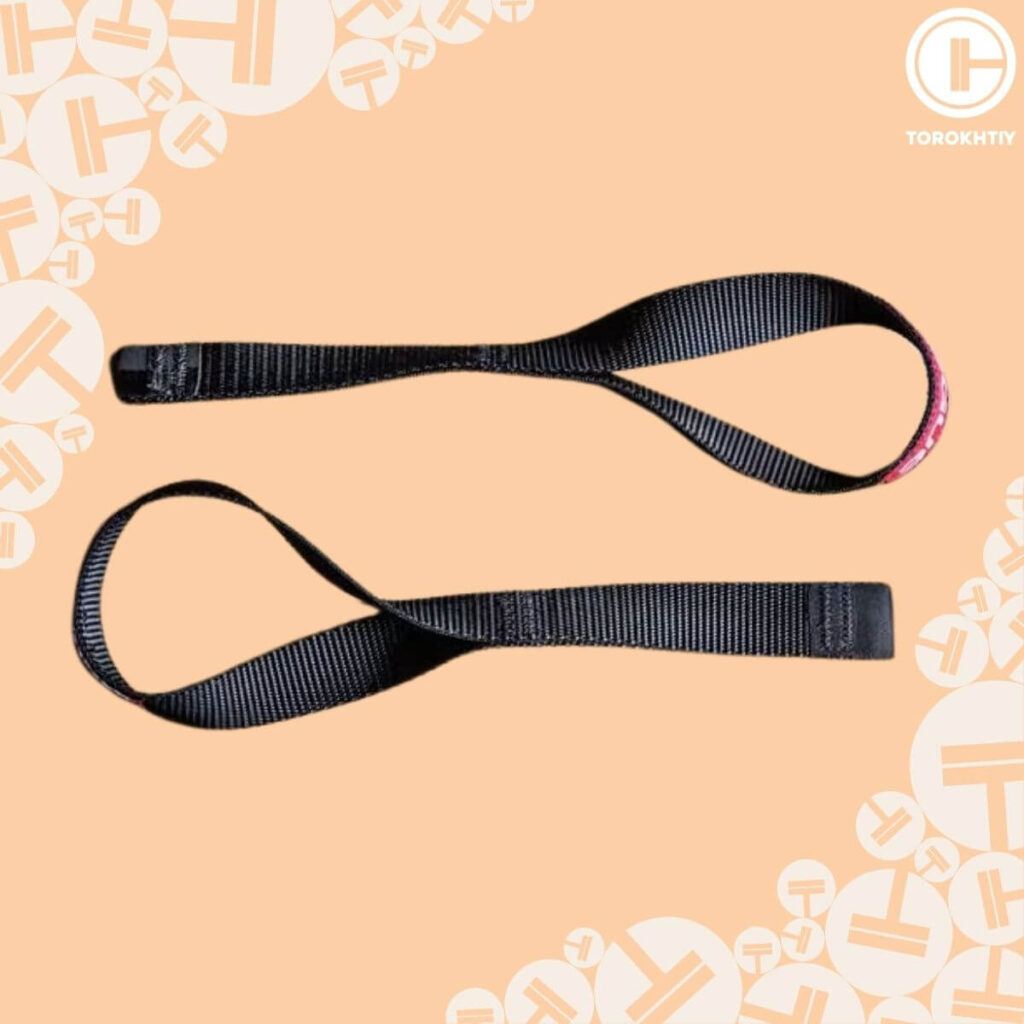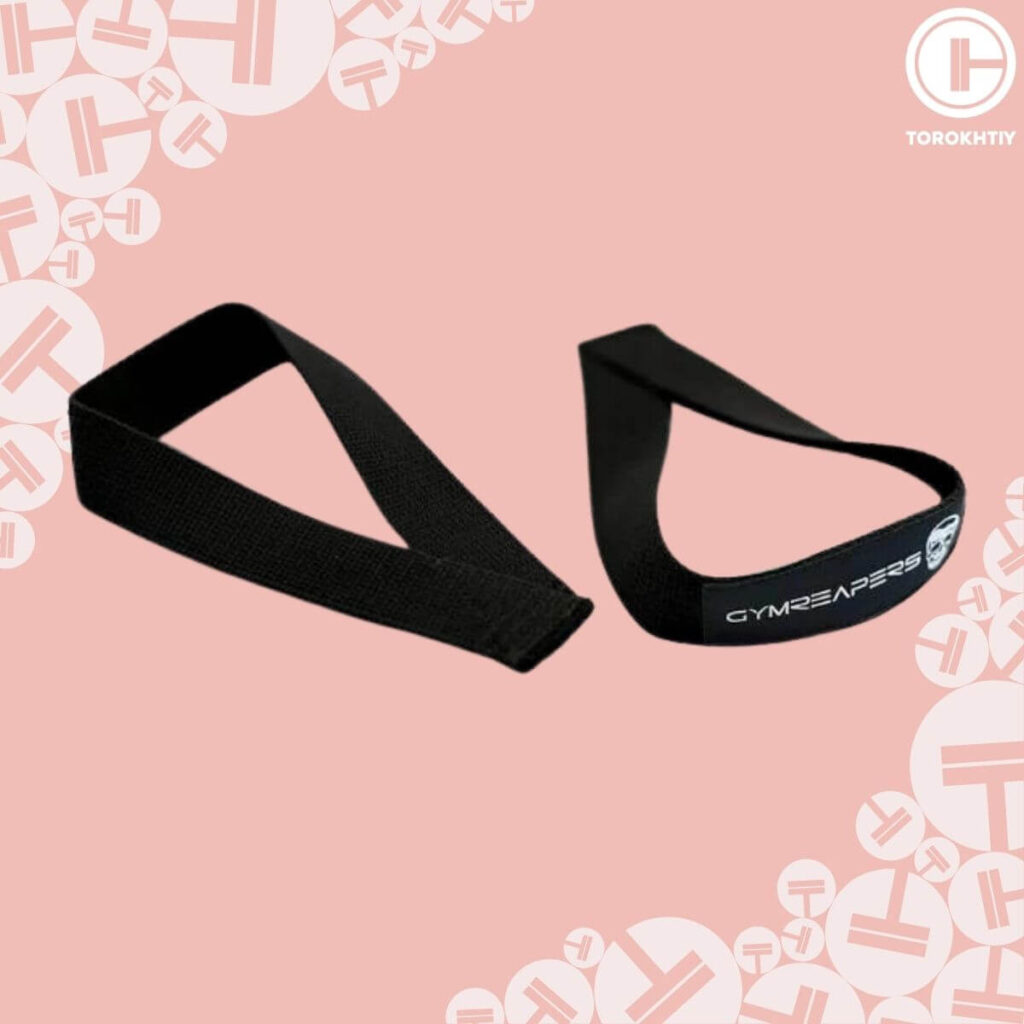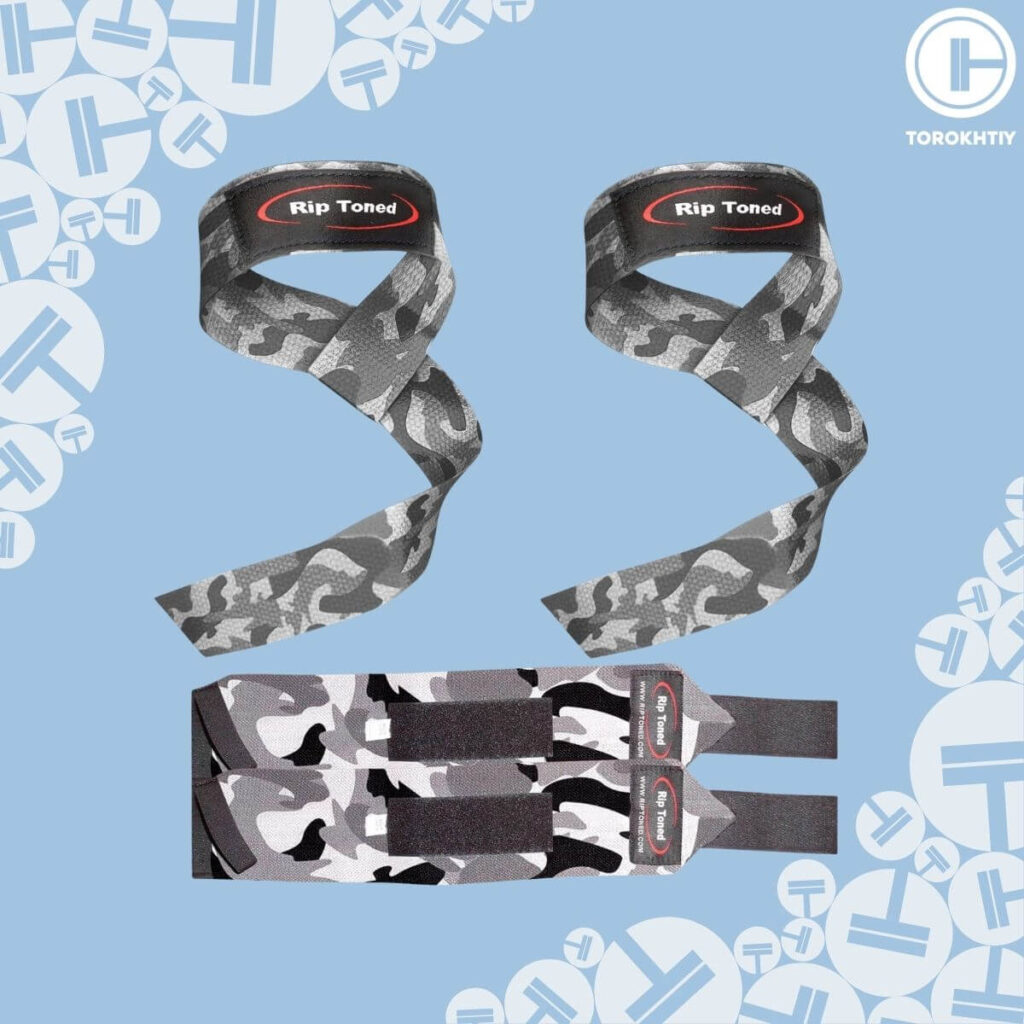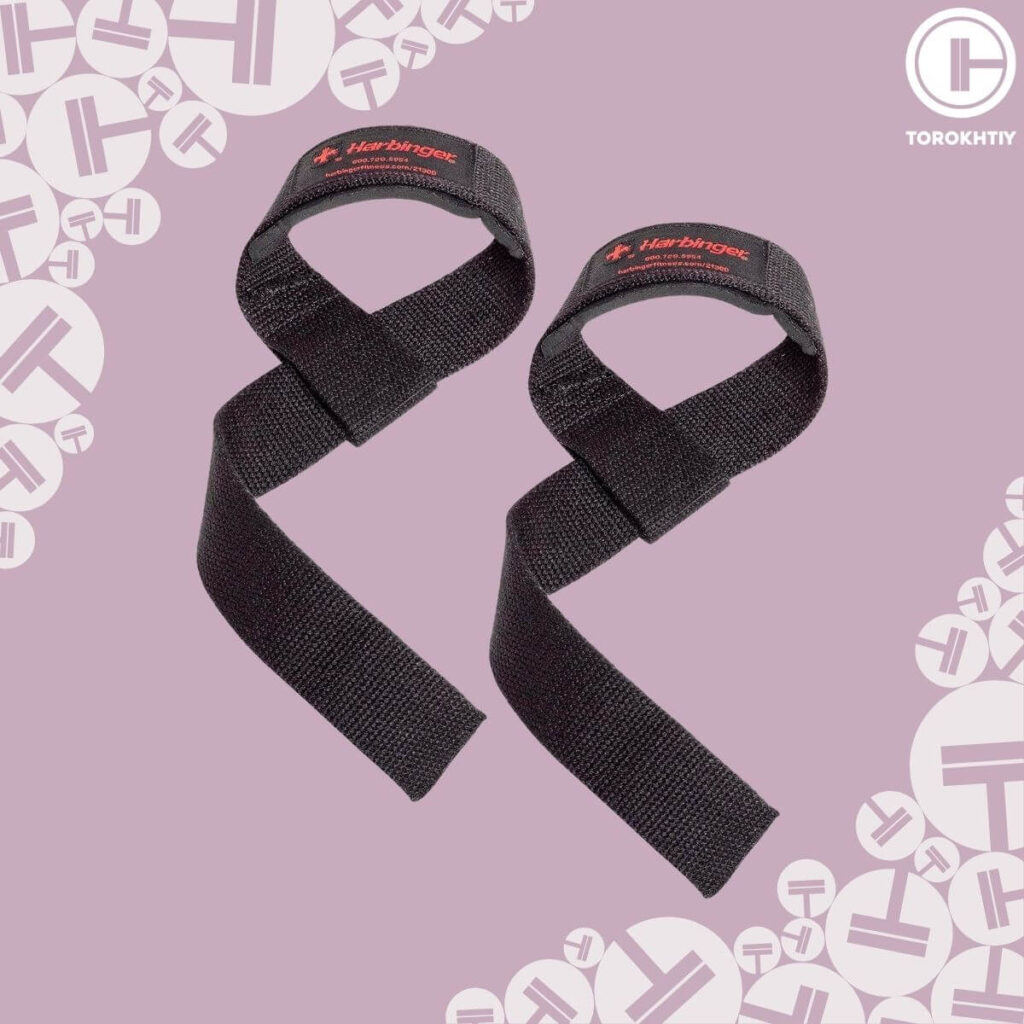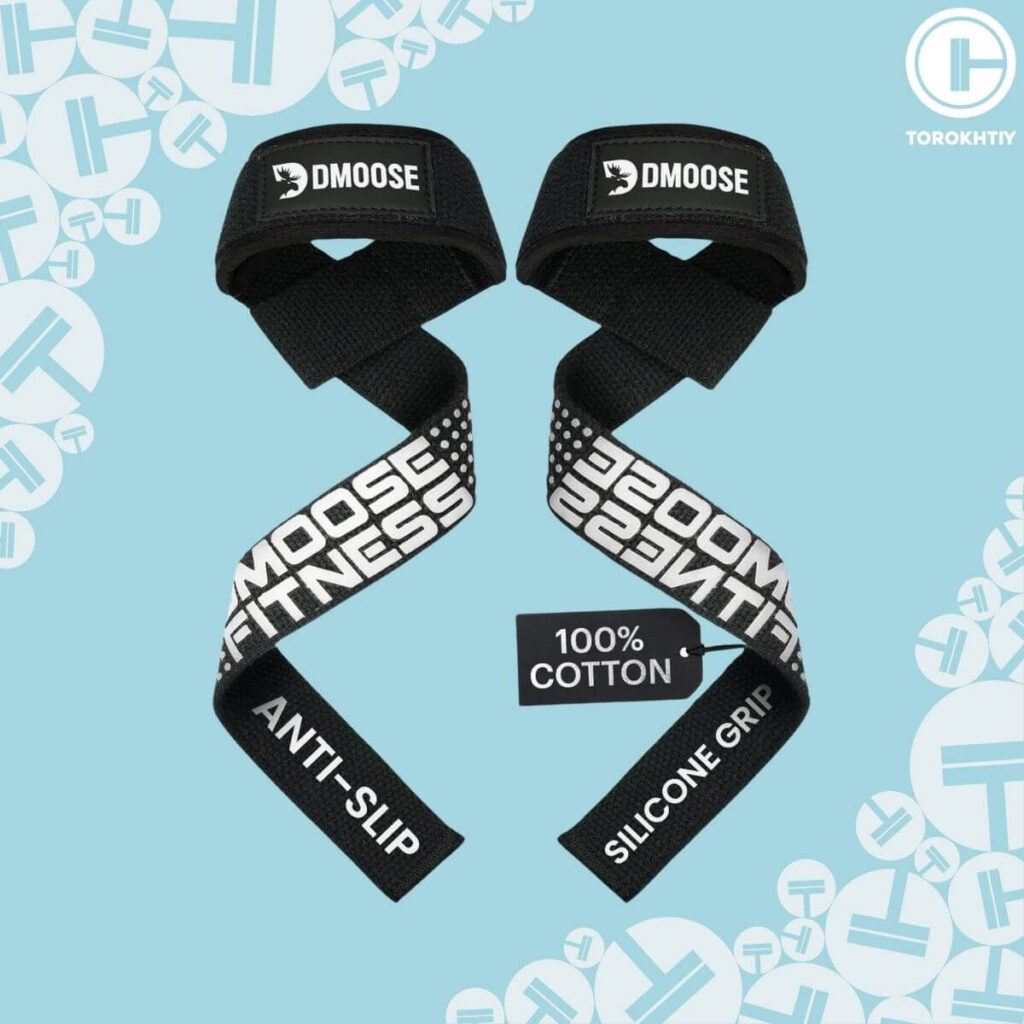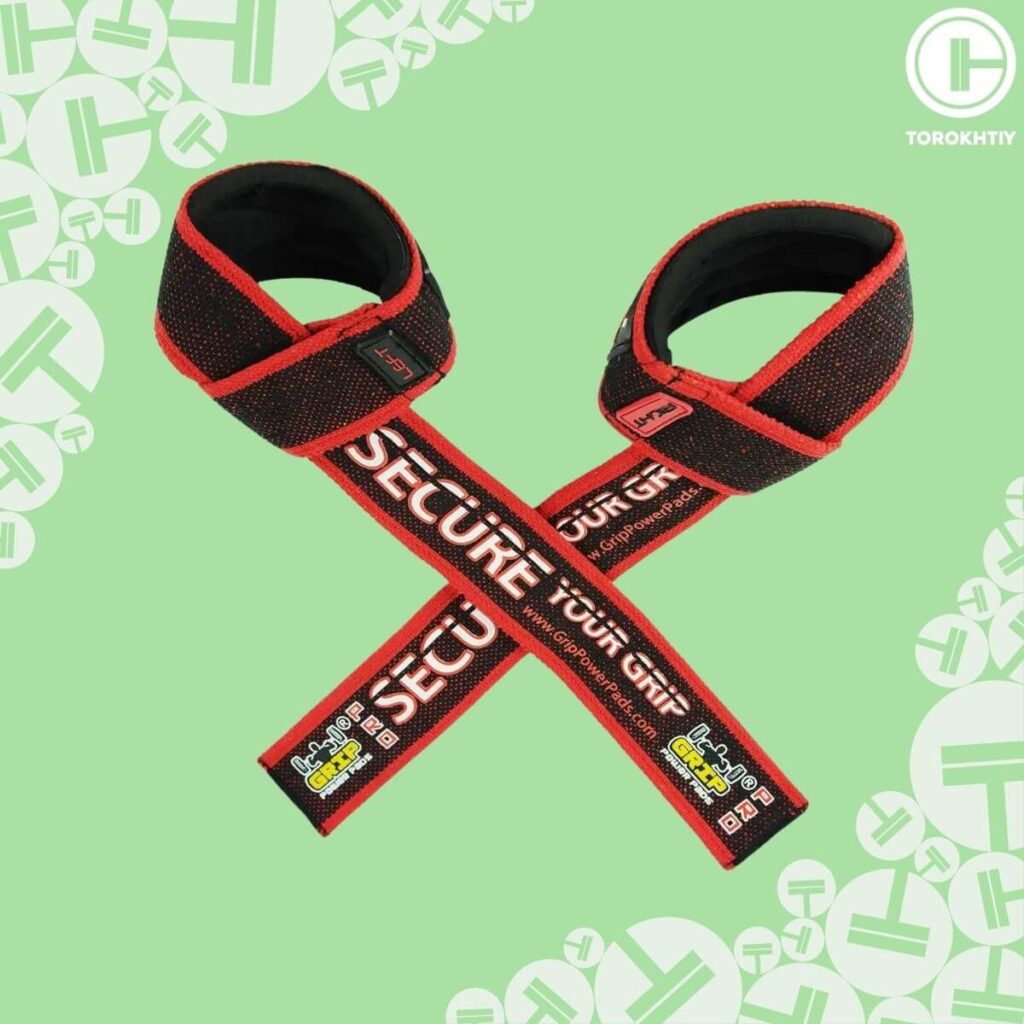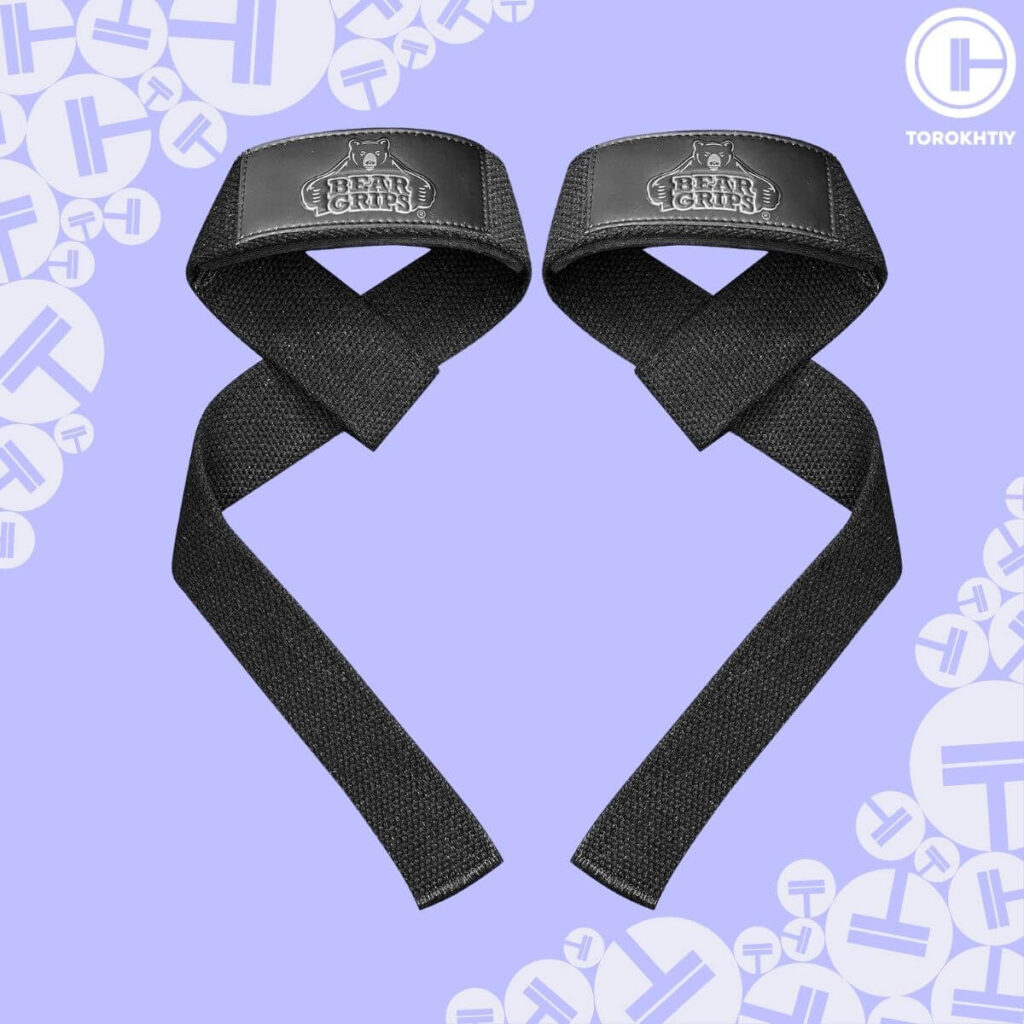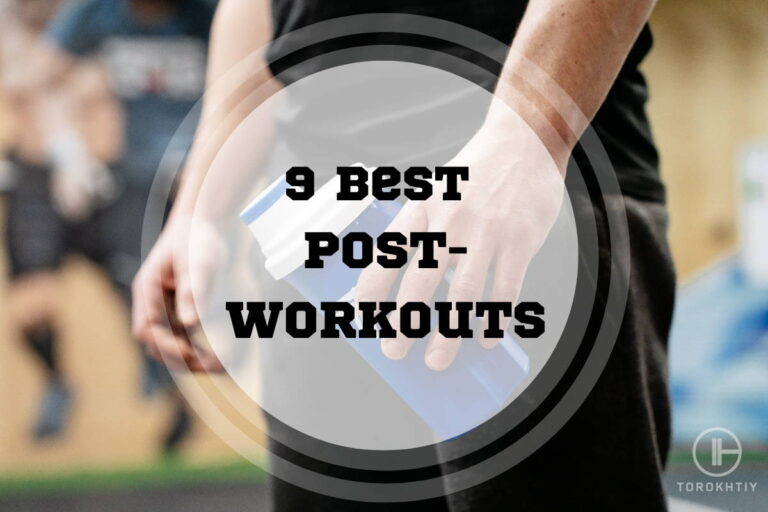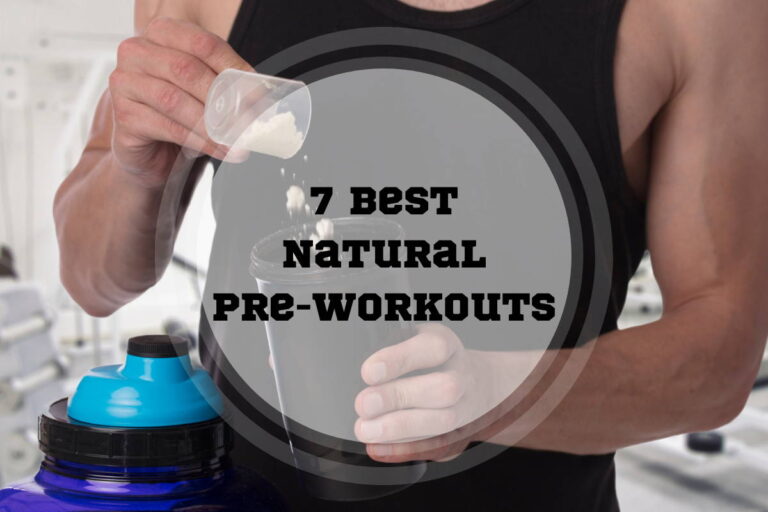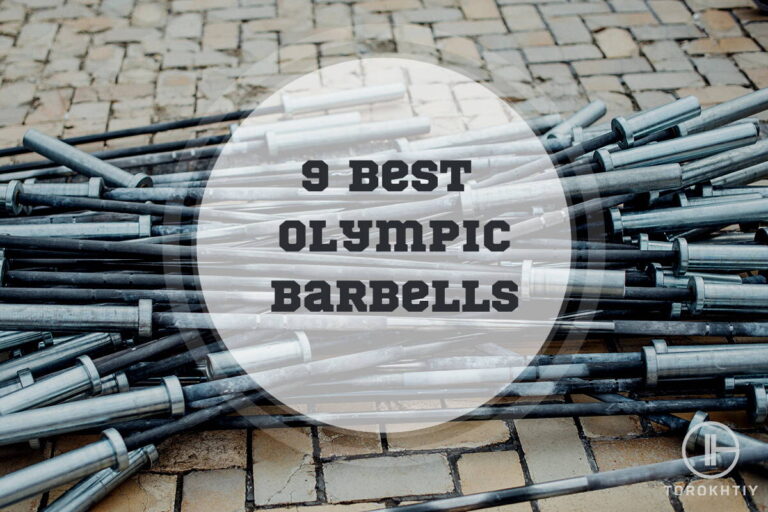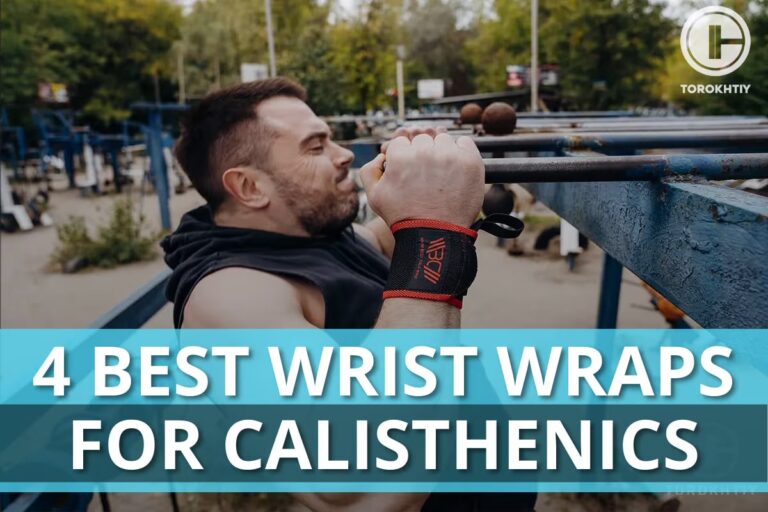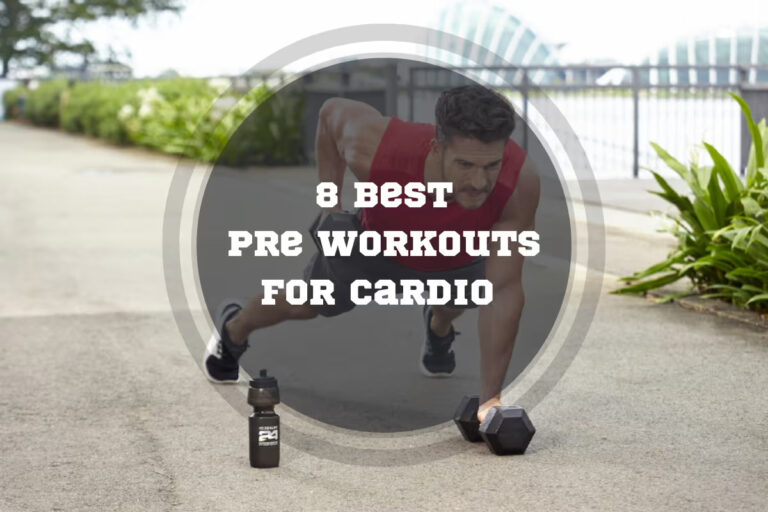10 Best Lifting Straps in 2025
Reviewed by: Ihor Shymechko (26 years of Oly Lifting & Training experience)
There may be many obstacles on the way to your dream weights. Yet, you can get rid of at least one problem by picking a pair of the best lifting straps. If you are at the stage when your body and mind cry out for more kilograms, but your grip screws everything up, I’m here to give you a hand.
I have prepared a whole guide on choosing gym straps. Read about the most popular options on the market, their features and qualities to find your favorite pair for the strongest grip.
In a hurry?
In a hurry and can’t keep reading? How about you check out the WBCM LIFTING STRAPS.
The main purpose of WBCM’s decision is to make the strap as smooth inside as possible and, thus, comfortable on the wrist. If you hate red burning marks on the skin, WBCM might be a real discovery for you.
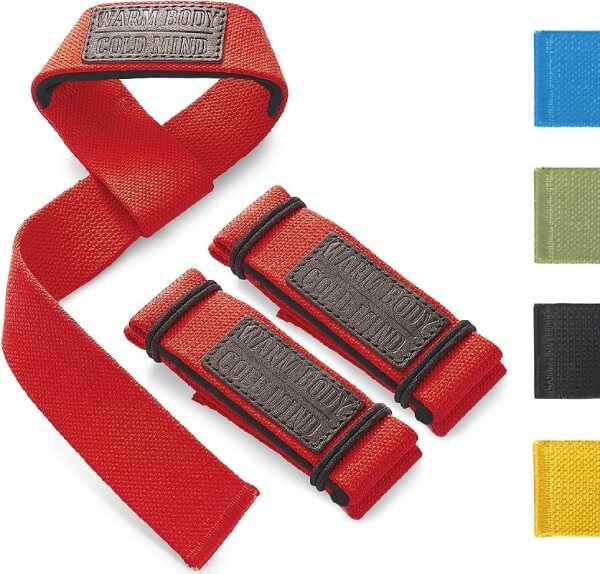
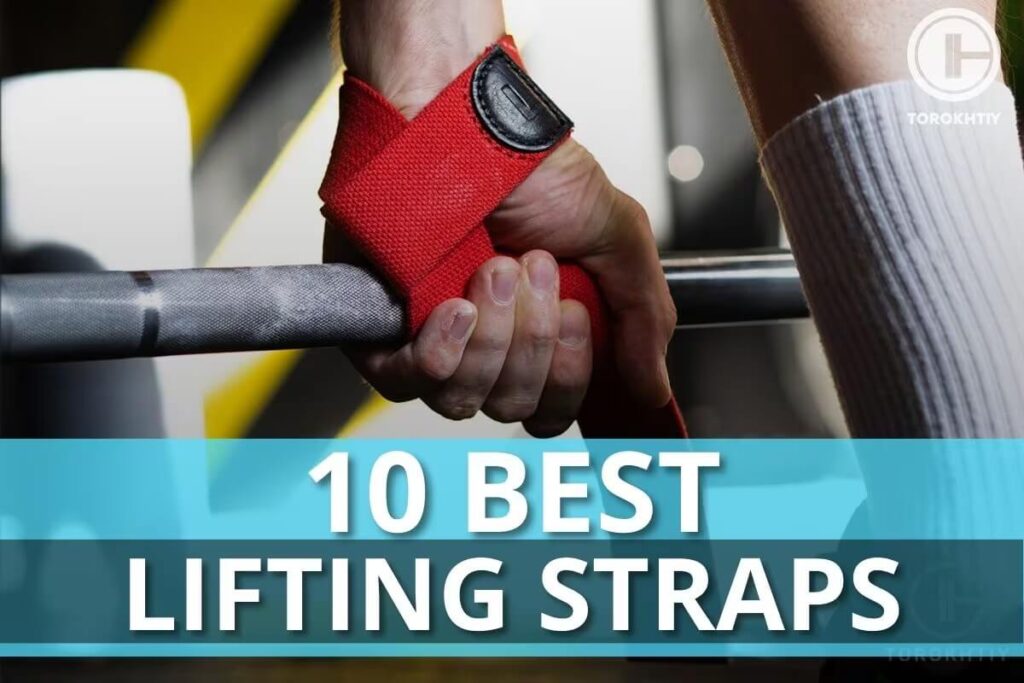
Top 10 Best Lifting Straps Reviewed
- WARM BODY COLD MIND Lifting Straps – Top Pick
- Gymreapers Lifting Wrist Straps – Runner-Up
- ELEMENT 26 Padded Figure 8 Weightlifting Straps – Best Figure 8 Straps
- ROGUE Speed Straps – 1’’ Straps With Quick Release Design
- GYMREAPERS Olympic Lifting Straps – Best Single Loop Straps
- Rip Toned Lifting Straps – Lifting Straps & Wrist Wraps Pack
- Harbinger Padded Lifting Straps – Padded Lasso Lifting Straps
- DMoose Lifting Straps – With Extended Length
- Grip Power Pads PRO Level Lifting Straps – 2’’ Width Lifting Straps
- Bear Grips Lifting Straps – Best Budget
I have tested the 10 most popular workout straps on the market and evaluated them all. I used the most important criteria: stitching, comfort, reliability, design, smell, package, and price-quality ratio. Find a brief summary in the table below and scroll down to jump into details right away.
| Product | Total | Stitching | Comfort | Reliability | Design | Smell | Package | Price/ Quality |
|---|---|---|---|---|---|---|---|---|
| WBCM | 69 | 10 | 10 | 10 | 10 | 9.5 | 9.5 | 10 |
| Gymreapers | 67.5 | 9.5 | 10 | 9 | 10 | 10 | 9 | 10 |
| Element 26 | 66.5 | 9 | 9.5 | 9.5 | 9.5 | 9.5 | 10 | 9.5 |
| ROGUE | 66.5 | 9.5 | 9.5 | 9.5 | 9.5 | 9.5 | 9.5 | 9.5 |
| Gymreapers | 65.5 | 9 | 9.5 | 10 | 9.5 | 9 | 9.5 | 9 |
| Rip Toned | 63.5 | 8 | 9 | 9.5 | 9 | 9.5 | 9 | 9.5 |
| Harbinger | 63 | 8.5 | 8.5 | 9.5 | 9 | 9 | 9 | 9.5 |
| DMoose | 62 | 8.5 | 8 | 9 | 9 | 9 | 9.5 | 9.5 |
| Power Pads | 61.5 | 8 | 9 | 9.5 | 8.5 | 8.5 | 8.5 | 8.5 |
| Bear Grips | 60.5 | 8 | 8.5 | 9 | 8 | 8 | 9 | 9 |
1. WBCM LIFTING STRAPS
WARM BODY COLD MIND becomes the best lifting straps. For a frankly reasonable price, you get a professional product that proves its quality in all terms.
Let’s start with nearly the most important quality – stitching. I can say that it wins all other options on my list due to the most careful seams. Also, I like leather patches at the ends – they keep everything neat and durable.
In practice, they make the ends heavier and, thus, easier to direct and wrap around a bar. They also leave no chance for future fraying or sticking threads.
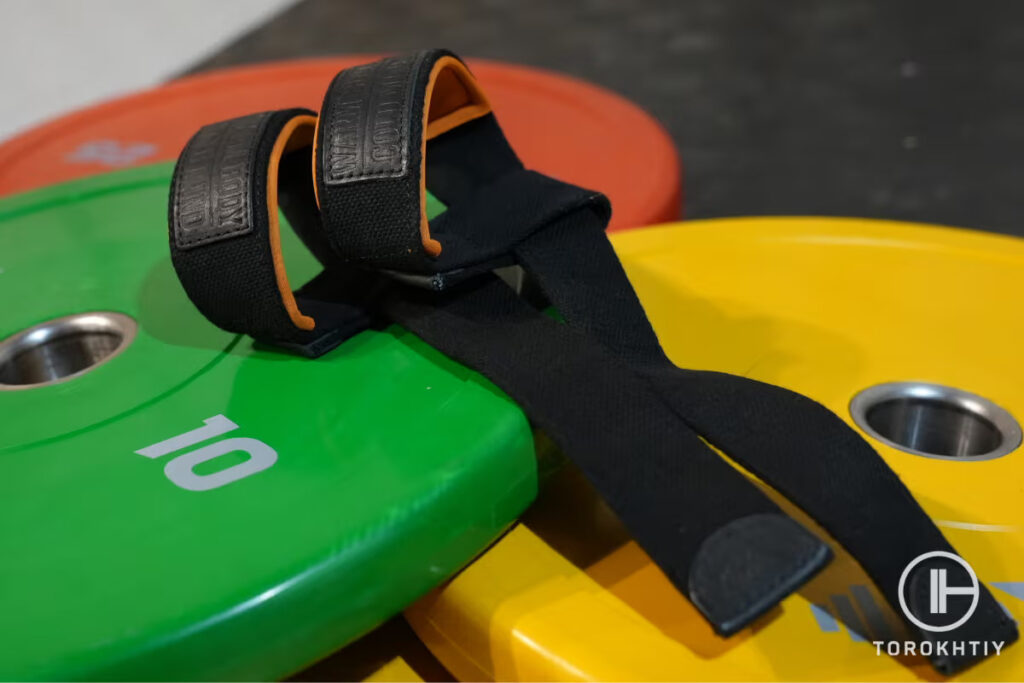
Moreover, one patch covers the seam of the loop at the front side. It is an interesting solution to stitch the strap in this way while other brands hide the seam inside to make the overall look fancy.
But the main purpose of WBCM’s decision is to make the strap as smooth inside as possible and, thus, comfortable on the wrist. If you hate red burning marks on the skin, WBCM might be a real discovery for you.
At the same time, the overall look of the strap isn’t spoiled at all because of a leather patch, which, by the way, indicates ‘right’ or ‘left’.
All in all, the WBCM lifting straps are a heavy-duty pro option for lifting even the most extreme weights comfortably and confidently.
WARM BODY COLD MIND becomes the best lifting straps. For a frankly reasonable price, you get a professional product that proves its quality in all terms.
Positives:
Could be better:
2. Gymreapers Lifting Wrist Straps
Gymreapers powerlifting straps are the runner-up on my list. They might be the best deadlift straps for amateur athletes who need a starter product for moderate workouts.
First of all, they are fairly comfortable on the wrist. The material is thin and soft, so it doesn’t dig into your skin. On the other hand, it makes the straps less reliable and durable. I wouldn’t use them if the weight is far above average. Also, they may wear out rather quickly if you are a fan of heavy intensive training.
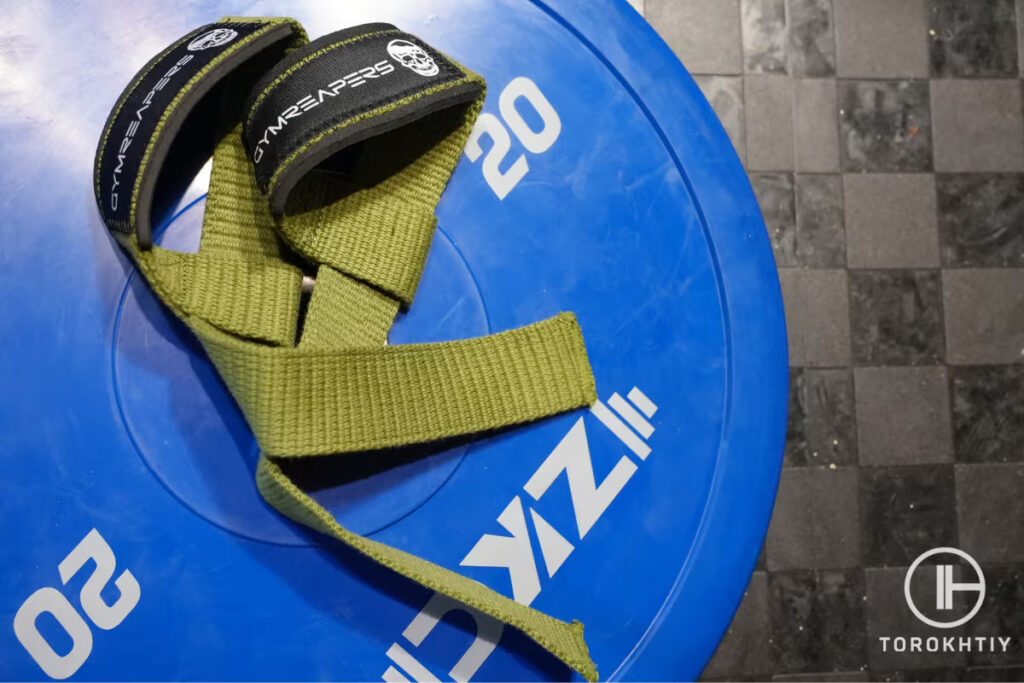
Additionally, they can start rubbing your skin a bit if you go really heavy. But they can be a good option for working out with moderate weights or dumbbells when you need flexibility rather than 100% resistance. On top of that, the price of these straps is more affordable, compared to the winner.
As for the stitching, I noticed some minor flaws. It is not as outstanding as the winner but, in general, it is quite satisfactory.
All in all, the Gymreapers lifting straps are a good starter option that offers good value for money and can work well for intermediate athletes.
Gymreapers powerlifting straps are the runner-up. They might be the best deadlift straps for amateur athletes who need a starter product for moderate workouts.
Positives:
Could be better:
3. ELEMENT 26 Padded Figure 8 Weightlifting Straps
These straps are designed to be both comfortable and durable, and their design is pretty intelligent. They have a single stitching point that minimizes weak spots which can compromise the straps’ integrity over time, and the strategically placed padding takes care of the comfort level.
They’re a bit bulky, so if you like something minimal, these may not be ideal, but they’re incredibly comfortable.
The E26 lifting straps are super easy to put on and take off, which drastically decreases the amount of time you’ll spend adjusting them because you can seamlessly transition between exercises.
It will not only save you time but also allow you to keep focus and momentum throughout the workout instead of being interrupted by strap adjustments.
They’re backed by a lifetime warranty, which means E26 is confident in their product and knows how long it will last you. These straps will withstand even the most intense workouts, and their price is nice, too. You’ll have a hard time finding a better value for money than these.
These straps have a single stitching point that minimizes weak spots which can compromise the straps’ integrity over time, and the strategically placed padding takes care of the comfort level.
Positives:
Could be better:
4. ROGUE Speed Straps
Rogue’s Speed Straps are a blend of convenience and safety and they’re great for high-speed movements like snatches. They’re 1’’ wide, 11.75’’ long and have a single closed loop design, and the quick release design ensures a swift separation from the bar to prevent accidents during drops.
The fixed loop design has a dual purpose - it prevents over-tightening of the wrists and keeps the straps comfortably positioned between sets, and eliminates the need for readjustment.
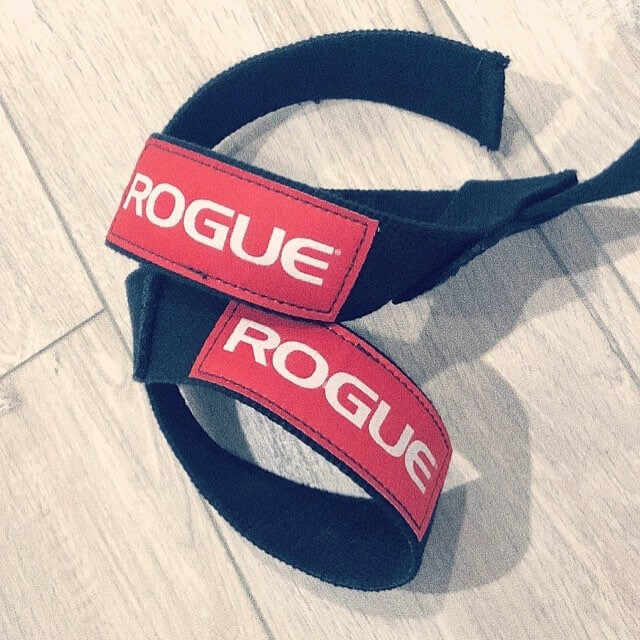
It also reduces the amount of time you spend on setting the straps up. When it comes to fast-paced workouts, every second counts!
The straps are made in the USA and they’re made of nylon, with double bar tack stitching, which makes them sturdy and durable. The ends that wrap around the bar are finished with a nylon strip, which helps maintain a stable hold before lifting,but also prevents fraying.
They’re more affordable than leather straps and have a unique texture that some people prefer, but quality-wise, leather straps feel more substantial.
Rogue’s Speed Straps are a blend of convenience and safety and they’re great for high-speed movements like snatches. They’re 1’’ wide, 11.75’’ long and have a single closed loop design.
Positives:
Could be better:
5. GYMREAPERS Olympic Lifting Straps
Gymreapers’ Olympic Lifting Straps are made of cotton and they have reinforced triple stitching. They give quite a boost to the strength of your grip and they’re particularly beneficial for challenging movements like cleans and snatches.
Their design is teardrop-shaped and provides a secure hold around the barbell. With 8.5’’ in length, they offer more than enough coverage for wrapping around the wrist and the barbell.
These can be used for a lot of lifting exercises, including Olympic weightlifting, powerlifting, cross-training, deadlifts, snatches, clean and jerk, and a lot of other pulling movements.
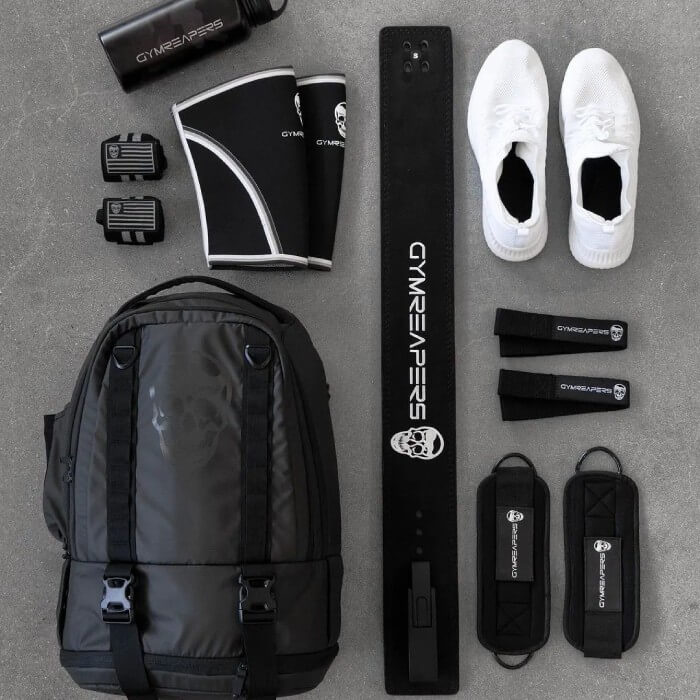
You may be slightly worried about these being made of cotton because that might not seem like the most heavy-duty option, but the intention behind using this kind of fabric is to mitigate wrist discomfort during heavy lifts, so you can focus on your form and technique, rather than irritation caused by the straps digging into your skin.
And the cotton blend used for these is super durable and won’t fall apart soon. And if these straps ever do cause issues and start tearing, Gymreapers has you covered because the straps come with a lifetime replacement guarantee.
Gymreapers’ Olympic Lifting Straps are made of cotton and they have reinforced triple stitching. They give quite a boost to the strength of your grip and they’re particularly beneficial for challenging movements like cleans and snatches.
Positives:
Could be better:
6. Rip Toned Lifting Straps
Rip Toned lifting straps finish in the sixth place due to some flaws in the overall quality. While having an affordable price, they still fall behind some of the options on my list, some of which are even cheaper.
The first thing that I noticed is poor stitching. The seams are very noticeable and not very neat. At first, it might make no difference but can turn out to be a serious disadvantage in the long run.
Also, the padding lies on the strap not very reliably. I guess, it won’t last long and will get some cracks and tears soon.
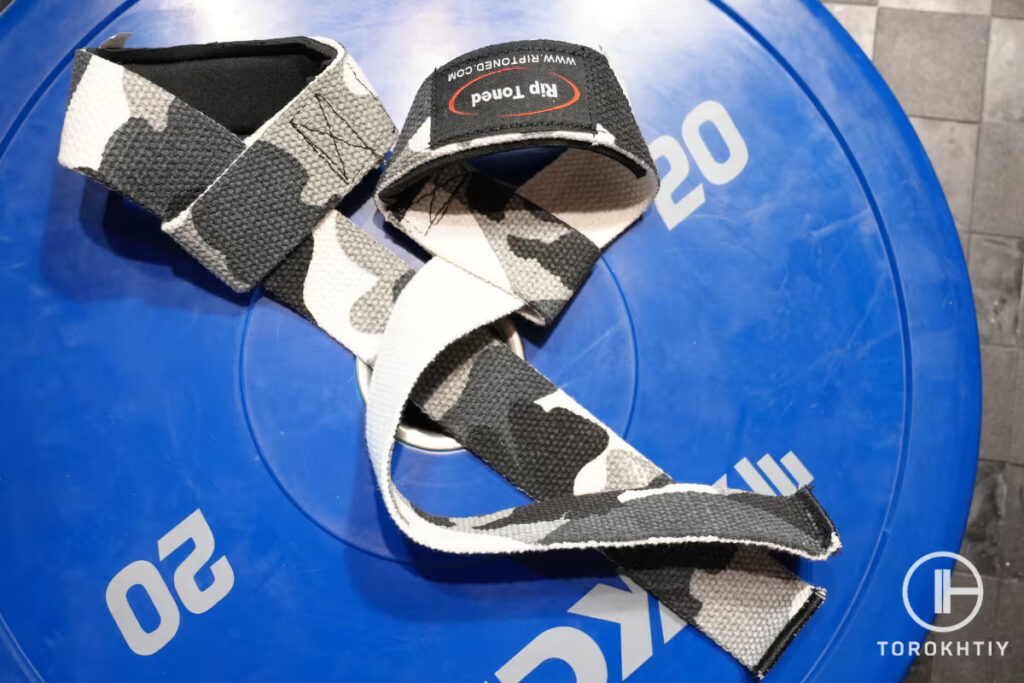
On top of that, these straps won’t give you high comfort as well. For me, they are rather harsh on the skin. They may dig into the wrists and rub them. Also, you need quite a lot of time to break them in.
Nevertheless, Rip Toned can become a good choice for amateur athletes for regular workouts. They also offer lots of colors and patterns to let any person find something special and close.
All in all, the Rip Toned lifting straps may catch your eye if you are an amateur who loves bright designs to stand out even in the gym.
Rip Toned lifting straps may catch your eye if you are an amateur who loves bright designs to stand out even in the gym.
Positives:
Could be better:
7. Harbinger Padded Lifting Straps
Harbinger lifting straps is one of the most popular products on the market. The price makes them accessible even for those athletes who are on a tight budget.
Obviously, you shouldn’t expect first-class quality from such a price. But these straps are fairly enough for working out with moderate weights. If you are just discovering sport gear and want to get the idea of lifting straps, Harbinger might be a very good choice.
The main disadvantage that I noticed is the stitching. It is rather poor with sticking threads and uneven seams. Additionally, the neoprene padding isn’t sewn to the strap properly. It may tear and become useless after some time.
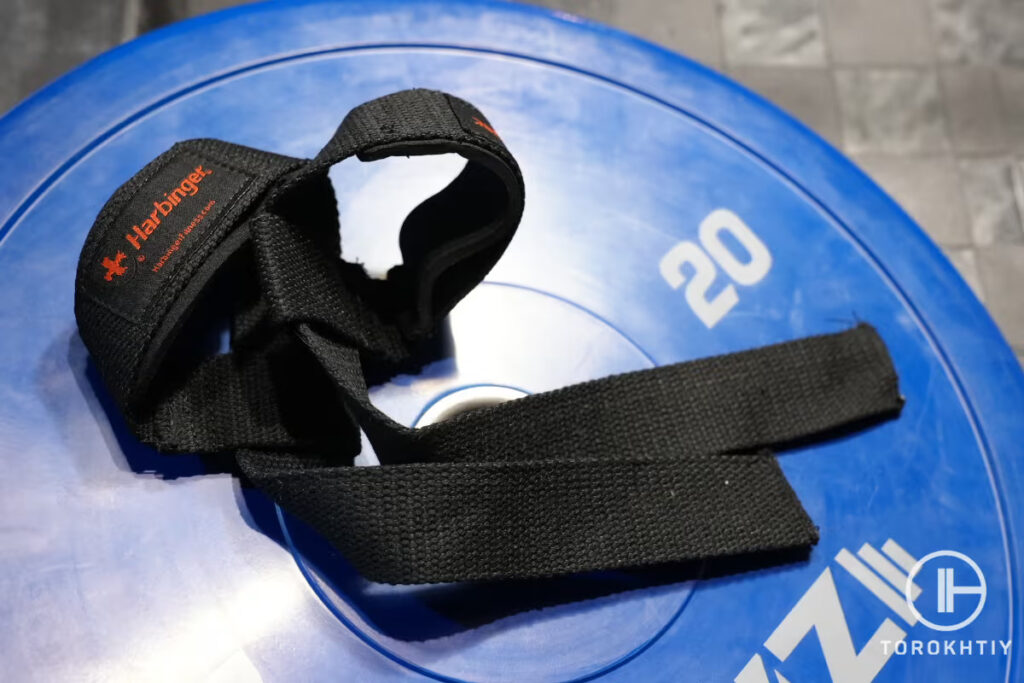
Still, these straps perform their mission quite well – they strengthen your grip and help you lift heavy weights comfortably. You just shouldn’t expect too much of them.
I also have to say that this option gets the highest score for the package. It really stands out, compared to other products on my list. If you are looking for a present, check it out.
Overall, the Harbinger lifting straps might be a great choice for regular gym goers who don’t want to spend much cash but strive to strengthen their grip.
Harbinger lifting straps is one of the most popular products on the market. The price makes them accessible even for those athletes who are on a tight budget.
Positives:
Could be better:
8. DMoose Lifting Straps
DMoose offers another option of affordable lifting straps. They are well-balanced in all terms and might become a good tool for any athlete.
Firstly, I’d like to say that these lifting straps are thicker than the second and third options on my list. It means that they might be a better choice for extreme weights. Still, the stitching is worse than our winner has.
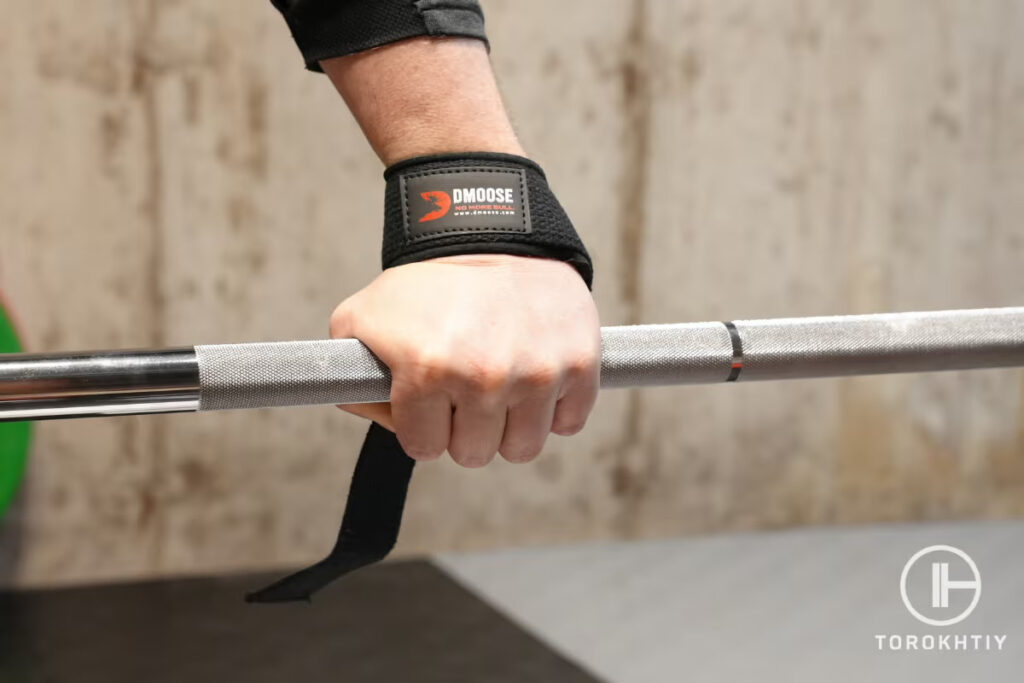
Another good thing about DMoose is its wide neoprene padding that comforts and supports your wrist pretty well. The only point is that the straps might not be completely comfortable for small hands because of their width. As mine are rather big, they fit fine.
Also, the package stands out among other options. It is well-made and might look fancy as a present.
All in all, DMoose is just the middle ground with a good balance in everything and an affordable price.
DMoose offers another option of affordable lifting straps. They are well-balanced in all terms and might become a good tool for any athlete.
Positives:
Could be better:
9. Grip Power Pads PRO Level Lifting Straps
Grip Power Pads lifting straps are a pro option for the heaviest lifts. Obviously, the price is also on the higher end.
The main peculiarity of these straps is silicone printing throughout the entire surface. It is made to ensure a ‘sticky’, thus, a firm grip. And it really does – the straps stay in place on the bar really well without any sign of slipping. It means they might become workable lifting straps for high-rep workouts.
Nevertheless, this advantage is a downside at the same time. Silicone gives that strong smell when you open the package. Just in case you are sensitive to various odors.
The material is also first-class – thick and durable. Obviously, it might feel a bit harsh on your skin but it will definitely handle the most extreme weights. But the stitching has some flaws. Luckily, they are rather an aesthetic issue and don’t affect reliability.
All in all, Grip Power Pads offer interesting lifting straps for the heaviest loads in case you are ready to splash out on them.
Grip Power Pads lifting straps are a pro option for the heaviest lifts. Obviously, the price is also on the higher end.
Positives:
Could be better:
10. Bear Grips Lifting Straps
Bear Grips lifting straps aim to literally give you a bear grip. And they do that quite well while not putting too much pressure on your wallet.
The first thing that makes these straps stand out is the silicone printing similar to the previous option. I must admit that it does look interesting and fancy. On top of that, it really prevents slipping and makes your grip more reliable.
Still, silicone printing gives a strong smell, as I said before. Beware of that flaw if you hate chemical odors.
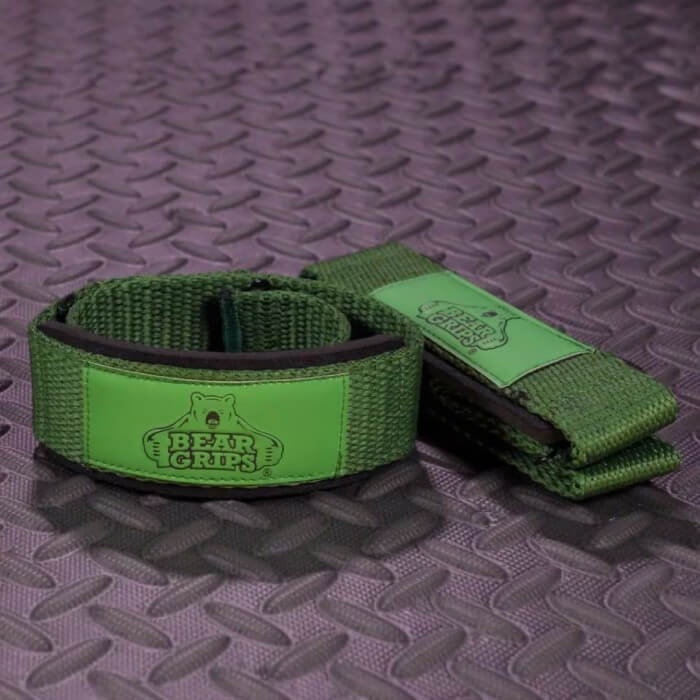
Another downside is the quality of the material. Some athletes complain about noticeable signs of wearing out after a few months. I haven’t tested them for such a long time, but the material is rather soft than heavy-duty. I guess, rough workouts can really make these straps deteriorate soon.
All in all, Bear Grips are a good option if you want to try non-slipping straps with silicone covering for a reasonable price.
Bear Grips lifting straps aim to literally give you a bear grip. And they do that quite well while not putting too much pressure on your wallet.
Positives:
Could be better:
Experts Who Contributed To This Article
6 years of Oly Lifting & Training experience
20 years of Oly Lifting & Training experience
M.Sc.Eng. Biotechnology, Sports Nutritionist

Lifting Straps: General Characteristics, Main Types
It’s hard to imagine weightlifting, powerlifting, and strength training in general without lifting straps. They come in all kinds of types and sizes, and each of them is designed specifically to cater to a different technique, exercise, and, of course, preference. Let’s see what the main types are and what are their main characteristics.
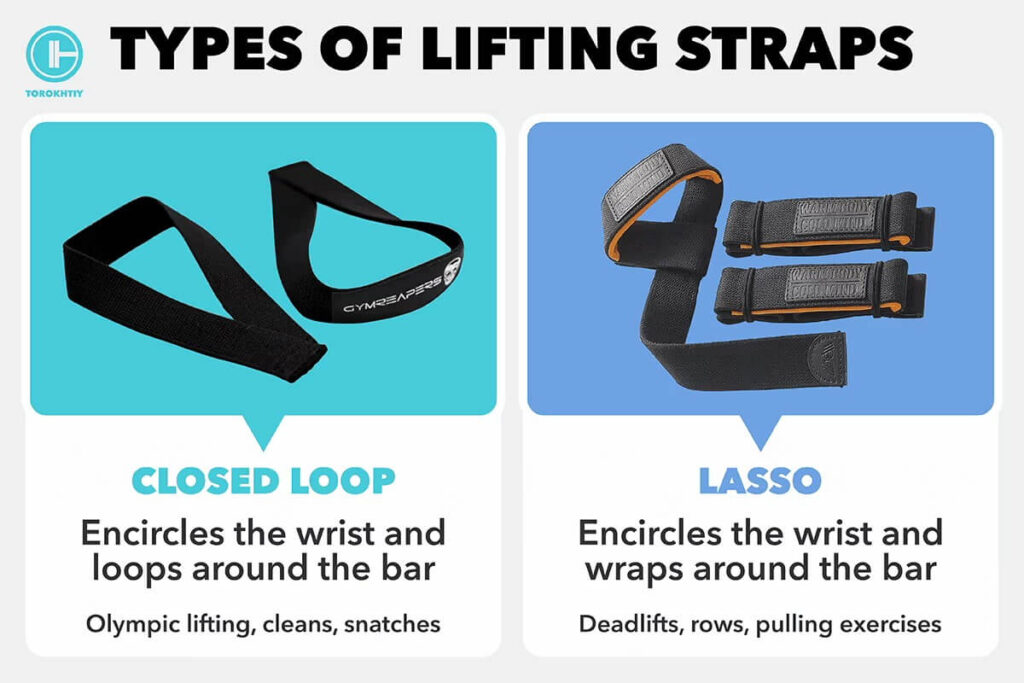
1. Lasso
These feature a looped design that goes around the wrist and then wraps around the bar or weight. They provide a secure grip on the bar and are mostly used for deadlifts, rows, and various pulling exercises. Lasso straps help with maintaining grip strength during high-intensity workouts.
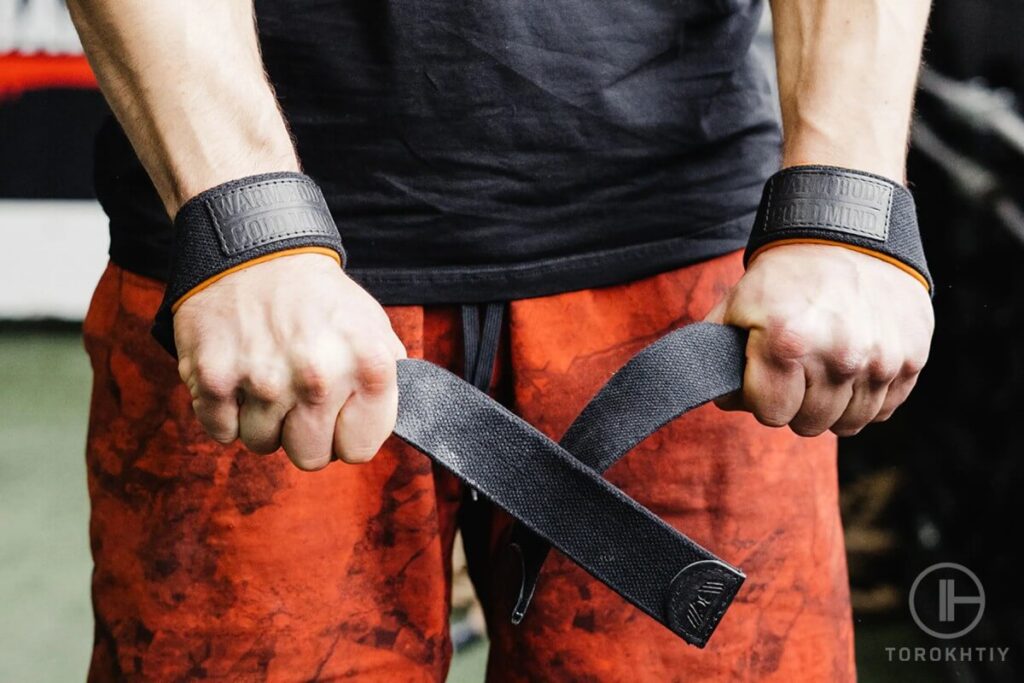
2. Closed Loop (Olympic)
Closed loop straps, also known as Olympic straps, form a teardrop shape that encircles the wrist and then loops around the bar. Like the name would suggest, they’re designed for Olympic weightlifting, cleans, and snatches.
The closed loop offers excellent support for quick movements and explosive lifts, so it allows you to focus on your technique without worrying about the strength of your grip.
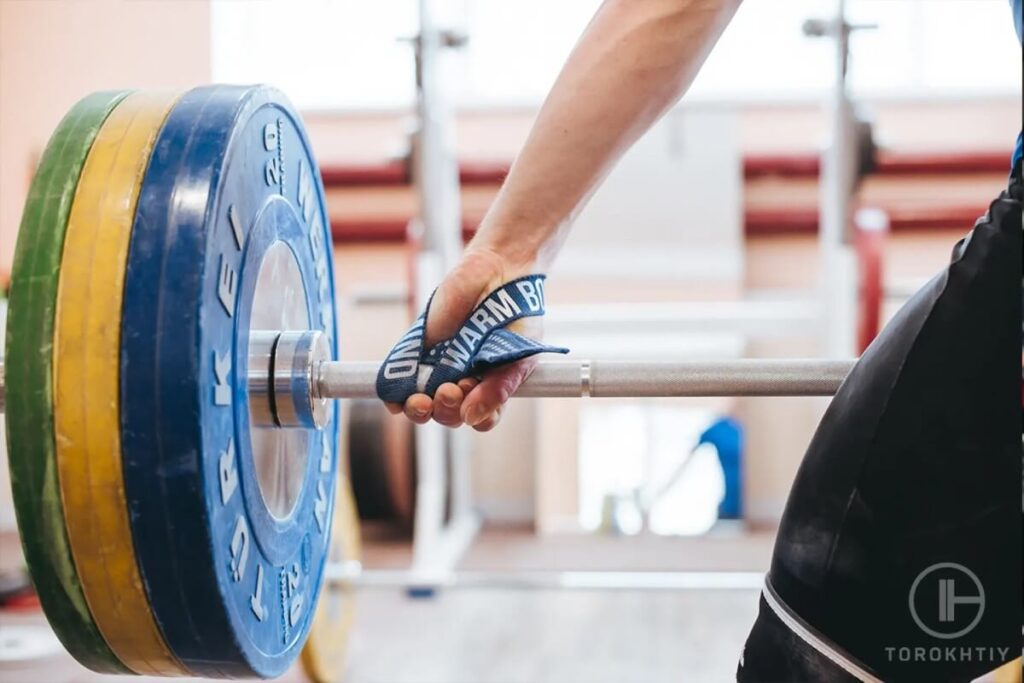
3. Open Loop
Essentially, this is a simple piece of strap and, although it's still effective for some exercises, it’s not commonly used these days. You wrap it around the bar and secure it by tucking the end under your hand. It requires some practice and they basically have been replaced by lasso ones.
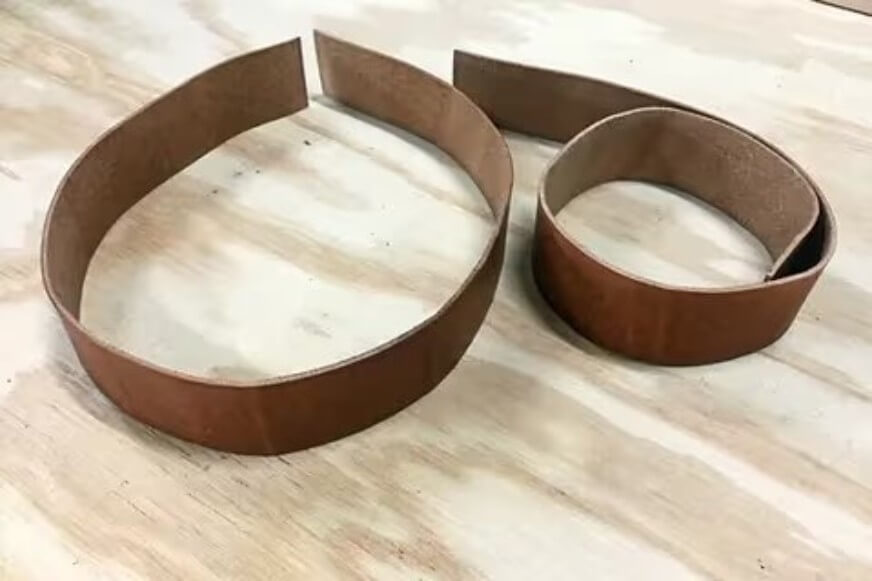
4. Figure 8
With their figure-eight design, these allow you to place your hand through the loop and then wrap the strap around the bar.
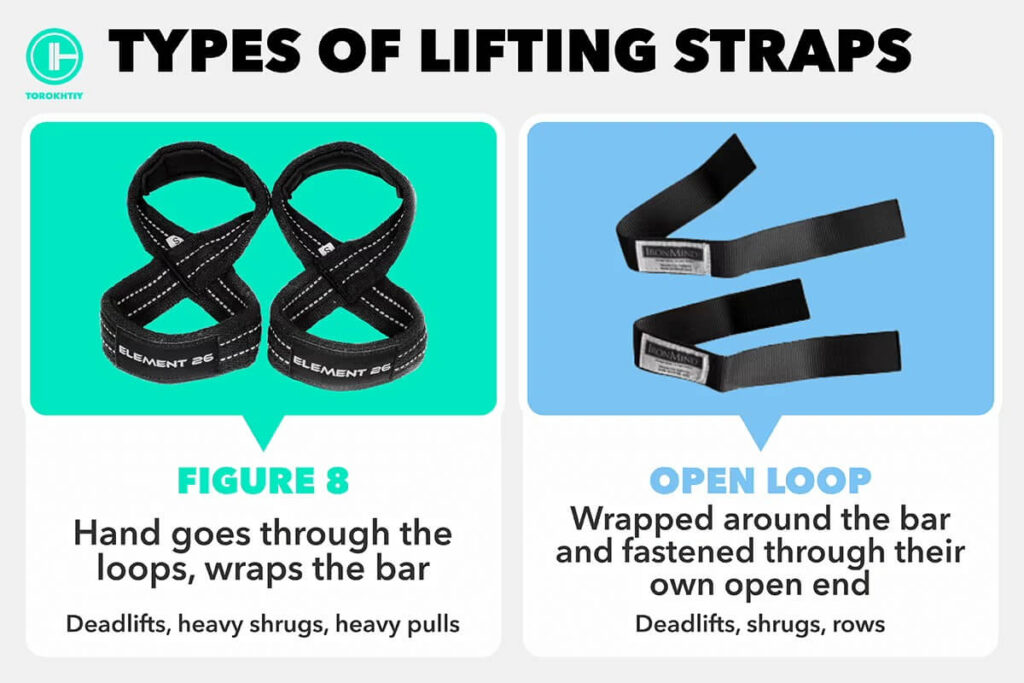
They’re typically used for heavy pulls (deadlifts, heavy shrugs) and provide extra security and grip. Their job is to prevent the bar from slipping or rolling during maximal lifts.
| Type | Design | Commom Uses |
|---|---|---|
| Lasso | Encircles the wrist and wraps around the bar | Deadlifts, rows, pulling exercises |
| Closed loop | Encircles the wrist and loops around the bar | Olympic lifting, cleans, snatches |
| Open loop | Wrapped around the bar and fastened through their own open end for a secure grip. No loop, just strap | Deadlifts, shrugs, rows |
| Figure 8 | Hand goes through the loops, wraps the bar | Deadlifts, heavy shrugs, heavy pulls |
What Are the Benefits of Using Lifting Straps?
There are plenty of lifting straps benefits. If you still doubt whether you need them, read about the main ones below.
✅ Stronger grip
The first and main purpose of lifting straps is to boost your grip. Obviously, your forearms, which are responsible for holding weights, are weaker than big muscles such as the legs and back. Therefore, they may get tired from heavy kilograms or high reps.
Lifting straps let your wrists and forearms rest a bit while you keep going. Also, they prevent a slipping barbell which is one of the biggest pains in the neck for any athlete.
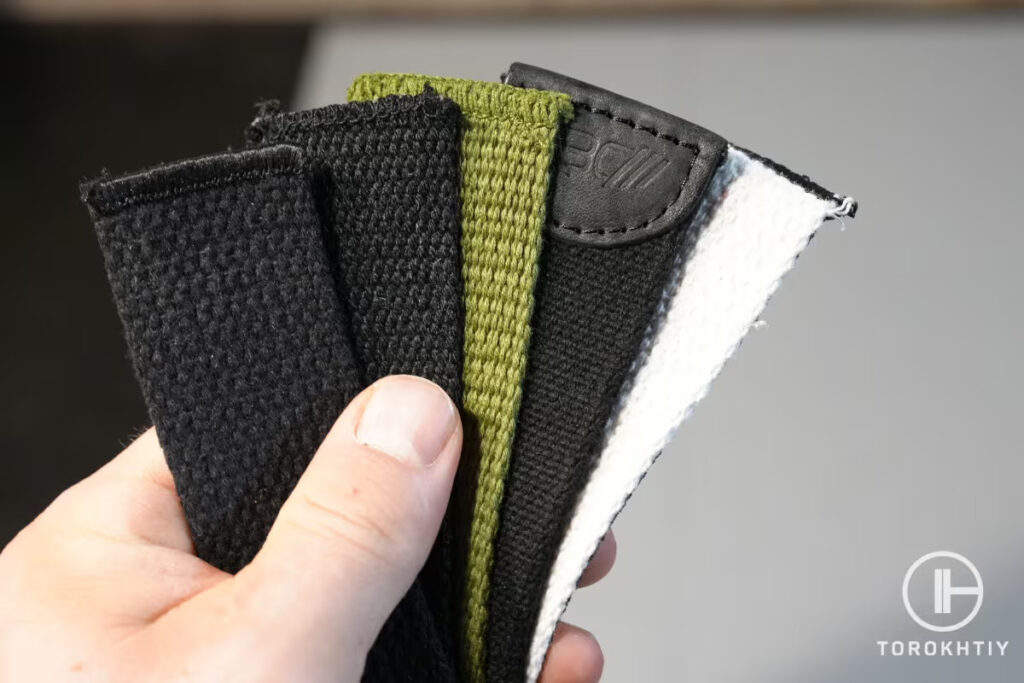
✅ Security
As I said above, lifting straps keep you away from a slipping bar. It is one of the most critical safety precautions. Obviously, having your barbell falling uncontrollably in the middle of a heavy set may cause injuries.
In this case, lifting straps fasten your wrists to a barbell and secure your grip really well so you can be confident and focused while hitting a new weight.
✅ Muscle concentration
Another pleasant bonus of using lifting straps is improving muscle control and activation. When you feel your forearms sore during pull-ups or lat pulldowns, it breaks your focus and stops you from concentrating on the target muscles.
Yet, lifting straps help you unload the forearms and direct all your focus on the proper areas. It is one of the main reasons why bodybuilders use them regularly.
✅ Improved technique
Apart from improving muscle concentration, lifting straps also help to maintain the proper technique and mechanics. When you don’t have to think about the forearm soreness or keeping your fingers tight enough, you can control other body parts better.
It might be a great bonus, for example, while working on your technique in Olympic weightlifting exercises. Also, by following the proper mechanics during the heaviest lifts, you keep yourself away from injuries.
Our expert Jacek Szymanowski noted:
“I reserve lifting with straps to situations where I lift heavy - around 85% of 1RM - but for reps, when I want to target specific adaptation like for example my Dynamic Effort day and work on my strength speed. Usually it requires a higher amount of sets and sometimes my grip can be a limiting factor. Heavy Clean Pulls for reps - I think I always use them. WBCM V1 is my favorite because of the size of the loop - it’s not too big and not too small - just perfect, and really outstanding durability.”
✅ Palm protection
When you wrap a bar with a strap, you create an additional layer that divides your palm from harsh knurling. First, it prevents calluses and tears on the skin – both an aesthetic and safety issue. Second, it helps you get rid of the annoying palm pain that comes with any heavy lift.
Tips From the Champ
It is best seen when it comes to Olympic weightlifting, especially the snatch. Most athletes often reach out for straps to avoid the pain caused by the hook grip in this exercise. In this way, you can concentrate on the proper technique and perform more reps. Also, all weightlifters use Olympic lifting straps for various pulls. Otherwise, such dynamic exercises would put too much stress on the palms.
Olympic Weightlifting Champion
✅ Wrist support
Despite wrist support is not the main purpose of lifting straps, they still provide it. It is especially noticeable if you use products with neoprene padding. Such a cushion not only protects your skin from rubbing but also keeps your wrist joints fixed in place.
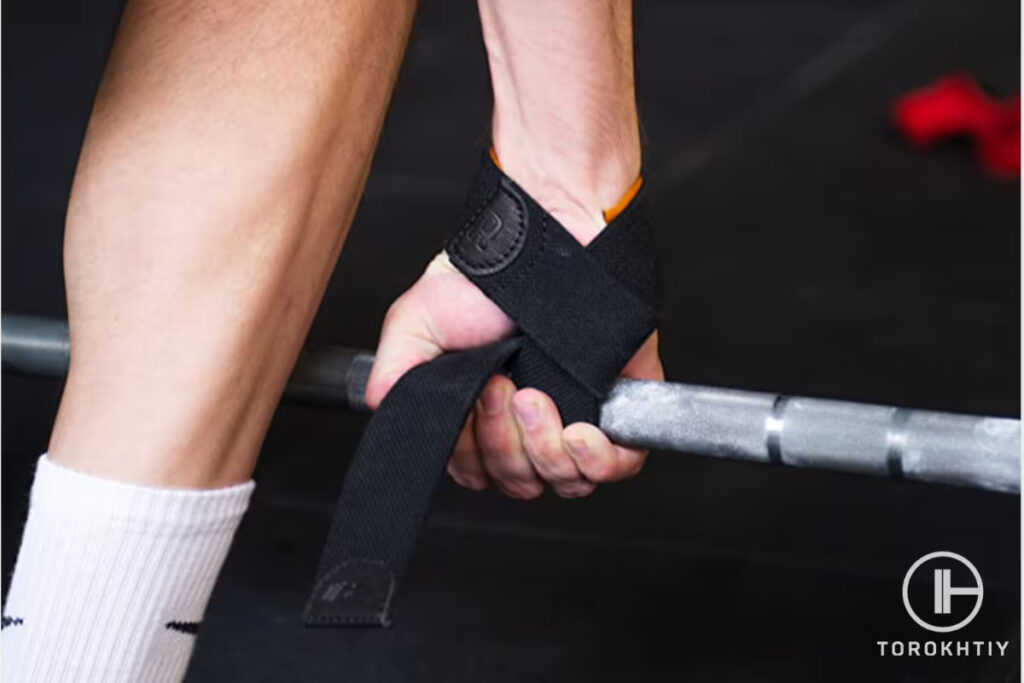
Lifting Straps vs Wrist Wraps vs Lifting Grips vs Gloves: What’s the Difference
So many accessories, so little time… Do you even need all of these? Well, the answer to that question lies in the type of exercises you do and your personal preferences. You may need one of them, you may find uses for them all.
Let’s start with lifting straps. Their purpose is to improve the strength and/or strength endurance of your grip and help with heavy lifts. They loop around your wrist and the barbell and provide extra support, which is especially beneficial for pull l exercises like deadlifts and rows, which depend on a solid grip.
Lifting straps help minimize forearm fatigue and allow you to hold onto the bar for longer periods, which enhances the effectiveness of targeted muscle engagement during lifts.
Wrist wraps, on the other hand, are designed primarily to offer support and stability to the wrist joint. They help reduce the risk of injuries by providing compression and reinforcement during various exercises.
Besides, wrist wraps help prevent hyperextension and promote better form because they stabilize the wrists and allow you to handle heavier loads with less strain on the wrist.
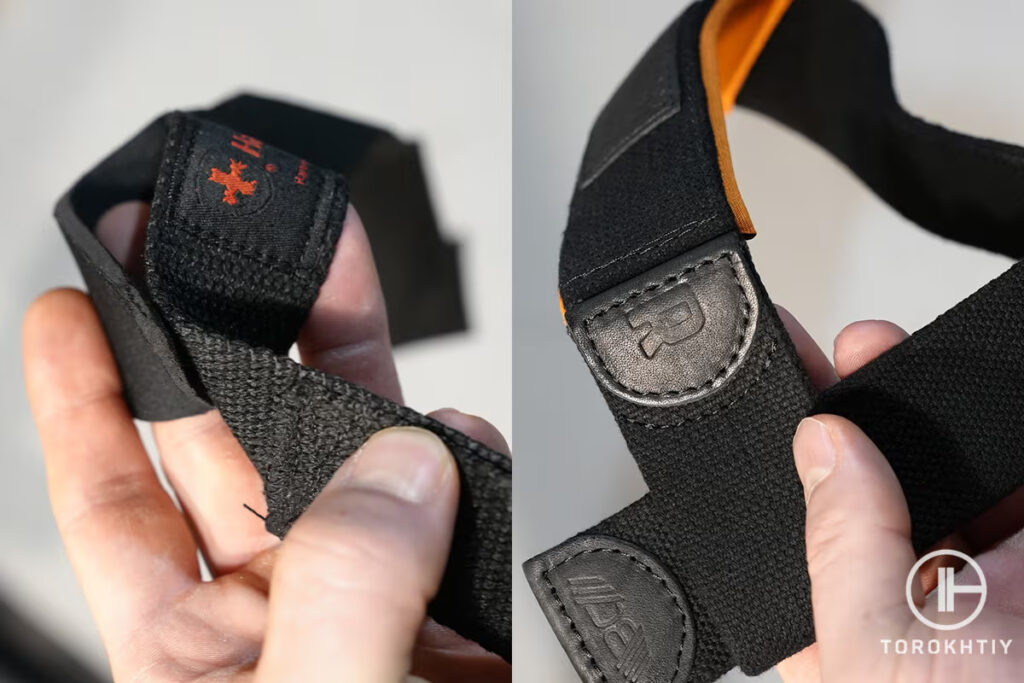
Lifting grips serve a different purpose than straps and wraps. Instead of focusing only on supporting the wrists or improving the grip, they are dedicated to protecting your palms while improving grip. They often come in forms of pads or coverings and offer an extra layer of protection to your hands.
Additionally, they provide better friction for a secure hold on the bar and reduce the risk of calluses and blisters. If you are looking for something to protect the skin on your palms, but that won’t compromise your grip, lifting grips may be your best bet.
Gloves have a comprehensive approach to hand protection and support. They cover the entire hand and fingers and offer palm padding, wrist support, and some grip enhancement. Gloves are suitable for people who want overall hand protection, less friction, and more comfort.
| Considerations | Lifting Straps | Wrist Wraps | Lifting Grips | Gloves |
|---|---|---|---|---|
| Material | Typically made of nylon or cotton | Elastic, cotton, or other durable fabric | Padded material, often neoprene or leather | Various materials: leather, synthetic, etc. |
| Application | Loop around the wrist and barbell | Wrap around the wrists | Wrap around the wrist or hands, and then around the barbell or dumbbell handle | Full-hand coverage |
| Main Function | Enhance grip strength for heavy lifts, assist in holding heavy weights better | Offer wrist support and stability, but have no impact on grip strength | Provide a non-slip surface that increases friction. Protect from calluses and blisters | Protect the entire hand, enhance grip by providing a textured surfaces that increases friction |
| Versatility | Specific to heavy pulls like Oly lifts, deadlifts or rows | Useful for basically all press exercises, offers wrist support | Compatible with a variety of lifting exercises, great for pull-ups | Suitable for a wide range of workouts |
When Do You Need Lifting Straps?
First of all, I don’t recommend weightlifting straps for beginners whose task is to build strong background and develop all muscles equally. This tool comes in handy when experienced athletes need to boost their grip for advanced training.
Generally, lifting straps can be used in all strength sports: Olympic weightlifting, powerlifting, fitness, strongman, bodybuilding, etc. But not all exercises need this tool – it can bring benefits only to pulling movements, such as deadlifts, all kinds of pulls, lat pulldowns, pull-ups, farmer’s walks, etc.
As for the equipment, it works well for different bars, dumbbells, and some training machines.
As I said before, lifting straps make sense for advanced training. There are two main cases when you need them – you work with heavy weights or for high reps. For example, you put on wrist straps for deadlift when your grip starts failing but your back and legs are ready to keep going.
Additionally, bodybuilders often use lifting straps for another purpose. They also allow you to concentrate on particular muscles. For example, you are doing lat pulldowns and feel your forearms sore afterward. In this case, lifting straps can isolate your target muscles.
about this process a few weeks before any competition. For example, you should put them aside at least 2 weeks before an Olympic weightlifting championship. Perform all classical exercises, such as the snatch or the clean, without any straps but keep them for pulls.
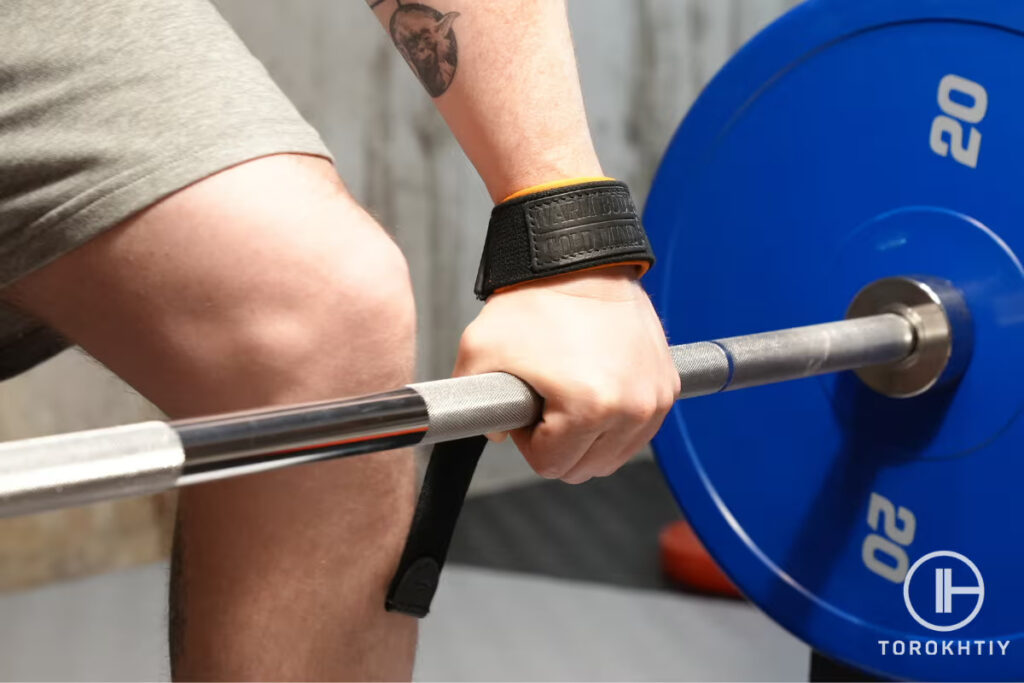
Nevertheless, don’t get carried away – leave some load for your forearms as well. In order to keep your grip strong, you better perform some exercises, sets, or whole workouts without any straps.
Also, this accessory is banned at most competitions. Therefore, always check all rules and regulations in advance not to get trapped. The point is that your wrists get used to straps really fast and don’t want to let them go afterward.
It may cause a lot of stress to them if you decide to quit straps suddenly. I recommend thinking
Our expert Tanya Shaiko noted:
“I use lifting straps for pulls, hang snatches, and hang cleans. They are extremely useful for me in these exercises.”
What to Look for in Lifting Straps?
Choosing the best straps for weightlifting may be quite a difficult task. Hundreds of them can make you suffer and postpone a purchase along with new PRs to a better time.
I want to make your life easier and new kilograms closer. Thus, find a short guide on how to find your favorite barbell straps quickly below.
1. Type
There are 3 main types of lifting straps: single-loop, lasso, and figure-8. They are a bit different, so let’s have a closer look.
Single-loop and lasso lifting straps are the most versatile options. They work equally well for all exercises and equipment: barbells, dumbbells, training machines, etc. If you like variety and want to be always ready for new drills, choose any of these.
If you are all into powerlifting or strongman, you might find figure-8 straps a go-to option. They are meant to give the highest security and literally ‘lock’ your grip. Yet, they make sense only for the most advanced heavy lifters.
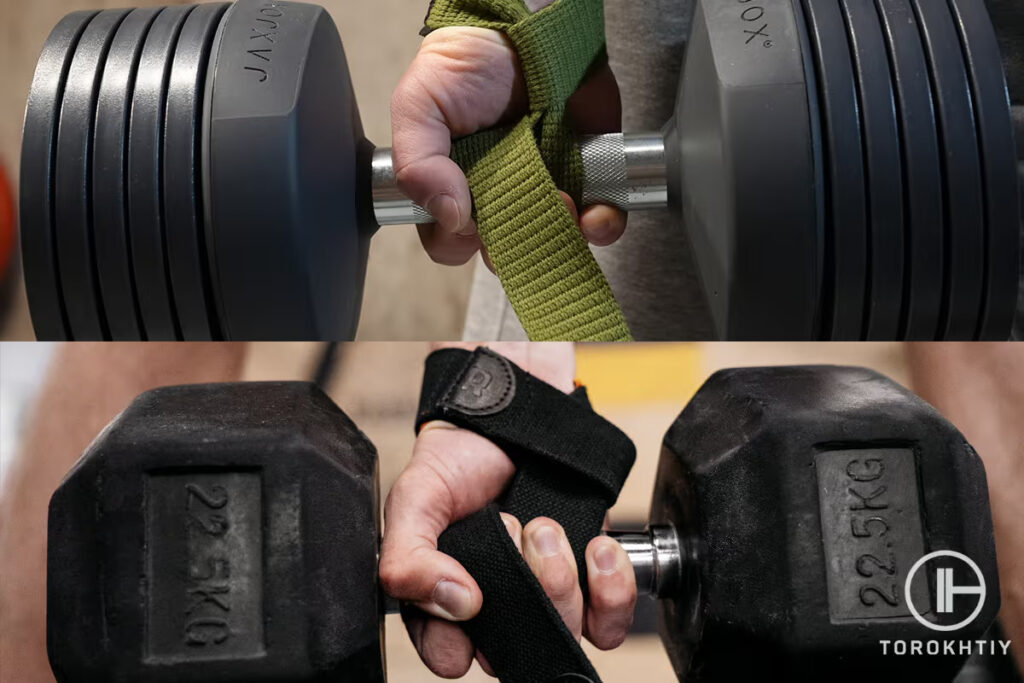
2. Material
Lifting straps are mainly made of cotton, nylon, or leather. The first option is the most common while the latter one is a premium choice, and the second one is around the middle ground.
Most athletes prefer cotton straps as they are the most skin-friendly. If you hate rubbing your wrists and getting those red irritated marks on the skin, go for this material. On top of that, it is usually the most affordable.
Nylon definitely fails in terms of comfort and sweat absorption but wins when it comes to durability. Obviously, it is more resistant to harsh bar knurling but I must say that high-quality cotton can make a good competition.
Leather is the most expensive and rare material for lifting straps. It is literally everlasting and the most reliable – that’s why athletes choose them. However, they won’t comfort your wrist, and be ready to spend a few months breaking them in. Clearly, it is a very long-term option in all terms.
3. Purpose
Think about the purpose you want to use the straps for, because each type is tailored to the needs of specific workouts. Lasso straps are super versatile and can be used for various exercises, like deadlifts, rows, and pull-ips.
Olympic straps offer quick release, which is ideal for heavy Olympic lifts, snatches, and cleans. Figure 8 straps are ideal for heavy lifting.
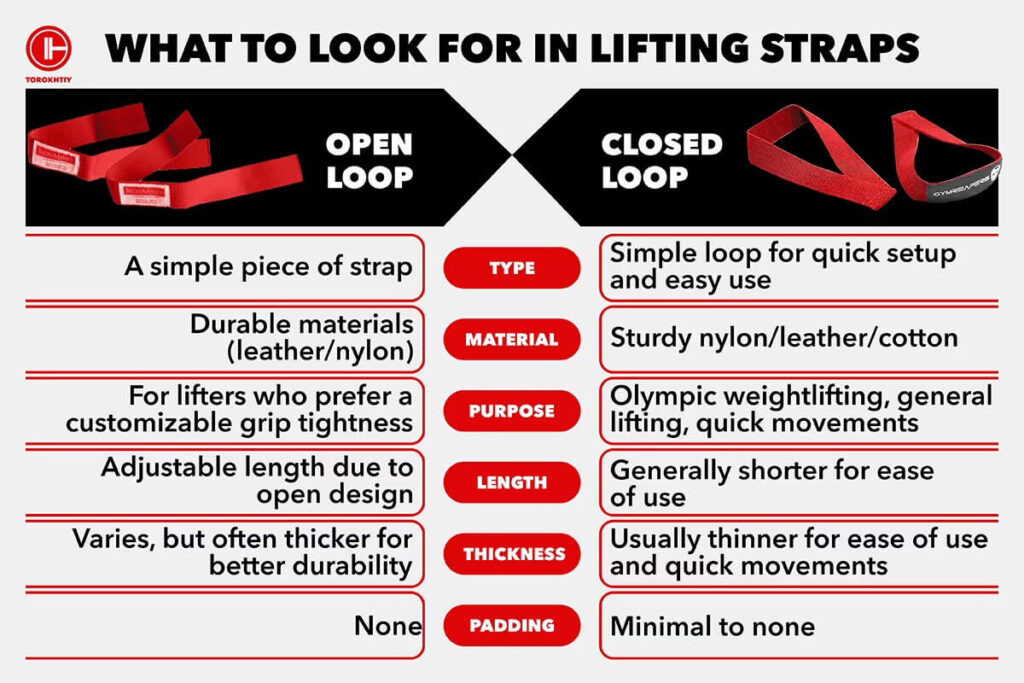
4. Length
The length of straps depends on your personal preferences, the equipment you work with, and your wrist girth. For example, you may need a longer strap for thick strongman barbells.
Also, some athletes like to wrap a bar several times – it gives them a sense of high security and reliability. And wrist girth may be an important factor when choosing figure-8 straps.
All in all, if you recognize yourself in any example above, you should have a look at longer straps. They will be more versatile. However, if you are going to wrap them only once and use standard equipment, long tails may annoy and confuse you a bit. Thus, go for the medium length.
5. Thickness
Thickness determines the durability and resistance of lifting straps. The thicker they are, the more weight they can handle safely.
If you are looking for a heavy-duty product to accompany your heaviest deadlifts, always choose thick and dense straps. They will last longer and give you a better sense of security.
Also, they might be more comfortable on the wrist when the weight gets really serious. They can keep their shape better and, thus, fit your wrist properly even when a huge barbell is pulling them down.
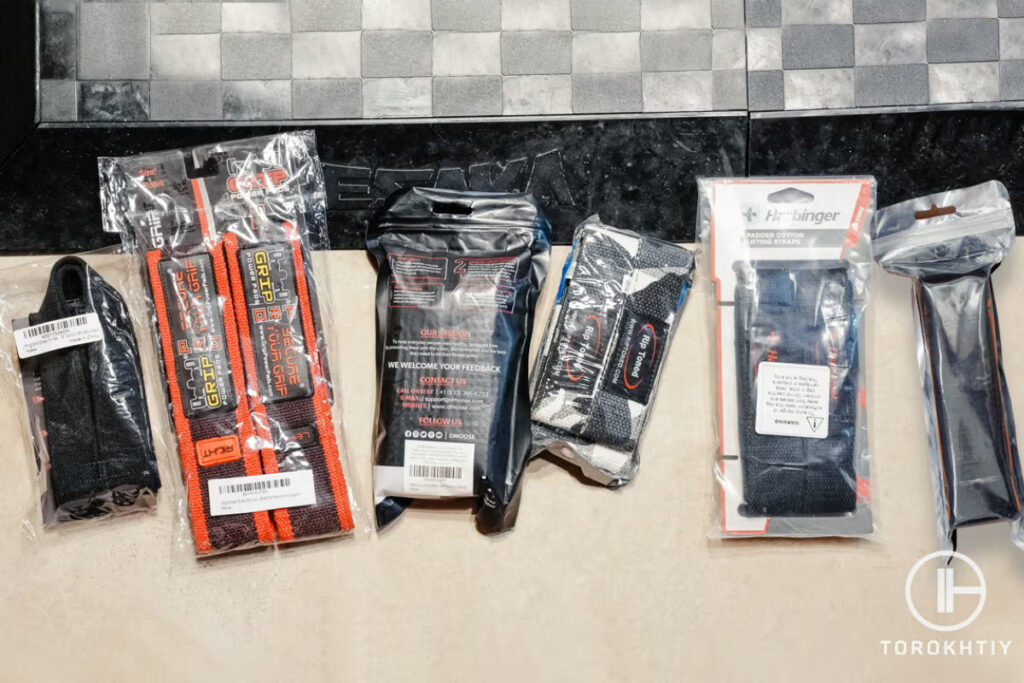
On the other hand, if you usually work with moderate weights or dumbbells, you may not need such a heavy-duty option. Perhaps, you won’t strain your future straps that much, so you can choose more lightweight products as well. By the way, they can even turn out to be more flexible and easy to break in.
Tips From the Champ
Before choosing your lifting straps, think about the potential for customization. Some straps have adjustable features, like attachments, that can improve your lifting experience. Some models come with hook-and-loop closures or quick-release mechanisms that provide a better fit and allow for quick adjustments during workouts.
Olympic Weightlifting Champion
6. Padding
A lot of brands start elaborating their lifting straps with neoprene padding. It makes them much more comfortable on the wrist and skin-friendly.
A soft cushion prevents a strap from digging into and rubbing your hand even at the heaviest sets. Also, it gives more wrist support.
All in all, go for lifting straps with padding if you value comfort and like innovative sport gear. Still, some athletes prefer a more ‘natural’ feeling of the bar, therefore, choose the most standard options
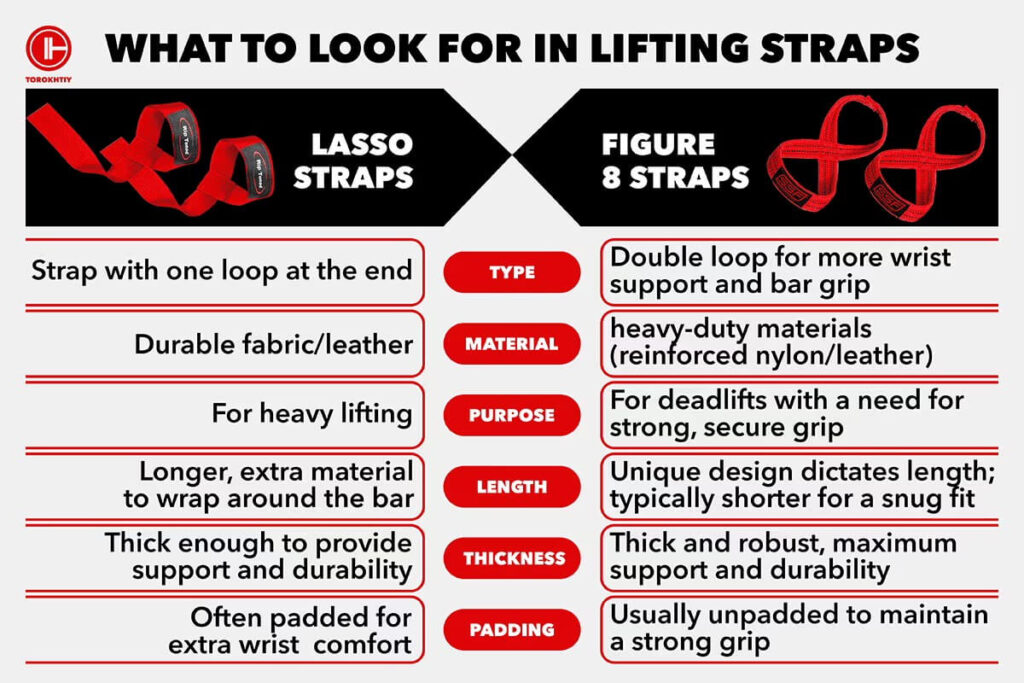
How to Use Lifting Straps?
Put the tail inside the loop on the other end to create another bigger loop. Put your hand into the new loop. Place the tail in line with the thumb.
Wrap it underneath the bar as many times as you need (usually, one is enough). Grab the bar and slightly rotate it if you want to tighten up the strap. Start the exercise.
When you are done and want to free your hands, just put the bar on the platform and take your fingers off it. The straps will go loose and you can pull them off the bar easily. Just don’t do that while you are still holding the bar in your hands above the platform. It can be unpredictable and risky.
At first, the process may take some time and effort to remember everything and put on the lifting straps properly. But after some time, you will do that automatically, without even thinking.
Our expert Sergiy Putsov noted:
"Straps are a must-have accessory for an Olympic weightlifter. I use them when performing snatch and pulling exercises, as well as during technical training. I prefer cotton straps V-shape model type. The best brand for me is Warm Body Cold Mind."
Common Mistakes to Avoid When Using Lifting Straps
There’s little chance you’ll find a weightlifter that doesn’t understand the importance of lifting straps, but there are issues that can arise from using them, and understanding what they are is key to preventing them from happening to you.
Relying on the straps too much is probably the most common issue, and it can hinder the natural strength development of your grip. Remember that you need a balance - use lifting straps strategically, mostly for heavy lifts, and allow your hands to build strength naturally during lighter sets.
You don’t need to use lifting straps every single time you work out and they can’t be a substitute for proper lifting technique. They should only complement your workouts and provide support where it’s necessary.
Another issue is wrapping the straps or fastening them around bars incorrectly. This can compromise stability during lifts and it can defeat the purpose of straps.
Moreover, do not forget about proper maintenance, because it can prolong the straps’ longevity and help them keep their form. Clean them regularly in cold water with a mild detergent and then leave them to air-dry.
Don’t throw them in the dryer, don’t leave them in direct sunlight for too long, and don’t even think about washing them in a washing machine, because it will damage them. Once you’re done with cleaning and drying them, store them in a dry and clean place so they’re ready for next use.
FAQ
What Type Of Lifting Straps Are Best?
Each type of lifting straps is good for different exercises. If you need the most versatile option, go for lasso or single-loop straps. If you need the highest security for extreme deadlifts, choose figure-8 straps.
Which Lifting Straps Are Best For Deadlifts?
If you work with moderate weights or for high reps, choose lasso or single-loop straps. The figure-8 option works well for the most extreme deadlifts.
Do Straps Weaken Your Grip?
Lifting straps don’t weaken your grip if you don’t use them for all exercises and sets. Make sure that you provide enough load for your forearms, and your grip will stay strong.
Are Lifting Grips Better Than Straps?
It depends on your training. Lifting grips give you significant wrist support and palm protection, apart from a stronger grip. They are especially good for high-rep sets, for example, in bodybuilding. Yet, straps are more affordable, give you a more natural grip, and are more flexible, for example, for Olympic weightlifting.
When Should I Start Using Lifting Straps?
Start using lifting straps only when you feel a lack of grip strength while approaching maximum weights. Put them on when you go heavy or work for high reps. Make sure to do some exercises and sets without them to provide enough forearm load.
Will Lifting Straps Make Me Stronger?
Yes, when used correctly. Lifting straps should indirectly contribute to strength development in your lifts. Because they help in supporting heavier weights by decreasing grip strength requirements, not really improving your grip strength, don’t rely on them to make your grip stronger.
Conclusion
If you are looking for high-quality reliable lifting straps, check out the winner – WARM BODY COLD MIND. They will make your PRs comfortable and stay in your gym bag for long years.
If you are new to straps and want to test the waters, have a look at Gymreapers or Harbinger. In this case, you will save a few bucks but still get a good product to start with.
Why do you use or want to use lifting straps? Share your thoughts in the comment section!
Also read:
- How to Put On Wrist Wraps
- What Are Wrist Wraps Used For
- Lifting Hooks vs Straps
- Lifting Grips vs Straps
- Wrist Wraps vs Wrist Straps
- Straps For Pull Ups
- How to Use Straps for Deadlift
- Leather Vs Nylon Vs Cotton Lifting Straps
- Best Squat Rack
References:
- How, Why, and When to Use Wrist Straps // Body Building:
https://www.bodybuilding.com/content/how-why-and-when-to-use-wrist-straps.html
Why Trust Us?
With over 20 years in Olympic Weightlifting, our team does its best to provide the audience with ultimate support and meet the needs and requirements of advanced athletes and professional lifters, as well as people who strive to open new opportunities and develop their physical capabilities with us.
All products we select are primarily approved and tested by the Olympic Weightlifting Champion Oleksii Torokhtiy. Under his guidance, we provide honest and reasonable assessments of the products we review by checking their characteristics, packaging, design, comfort and durability features, and general product rating. We select products from only high-quality and trusted sports brands, thus vouching for their quality.
The product testing process is described in more detail here
Author: Oleksiy Torokhtiy
Olympic Weightlifting Champion
Best Results: Snatch – 200 kg,
C&J – 240 kg
Oleksiy Torokhtiy is a professional athlete boasting 20 years of experience in Olympic weightlifting. With multiple European and World titles under his belt, he has showcased his prowess in two Olympic Games (Beijing 2008 and London 2012). Upon concluding his illustrious career, Oleksiy dedicated himself to coaching. By 2022, he had conducted over 200 weightlifting seminars worldwide. He is the visionary behind an international sportswear and accessories brand known for its motto, “Warm Body Cold Mind.” Additionally, he is an esteemed author and the creator of a series of training programs and eBooks.
Reviewed by: Ihor Shymechko
Pro Olympic Weightlifter, Coach
Best Results: Snatch – 208 kg,
C&J – 240 kg
Ihor has been a professional weightlifter since 1996, boasting over two decades of competition experience. His notable achievements include clinching the European Championship in 2009 and securing a silver medal in the 105kg division at the Senior World Championships in 2011. Ihor represented his country in the 2008, 2012, and 2016 Summer Olympics. After retiring from competitive weightlifting, he transitioned to coaching, leveraging his vast experience to guide athletes who now compete on both national and international stages.
If you have any questions/suggestions/any other inquiries considering product reviews, you can reach out to us via email – [email protected]
